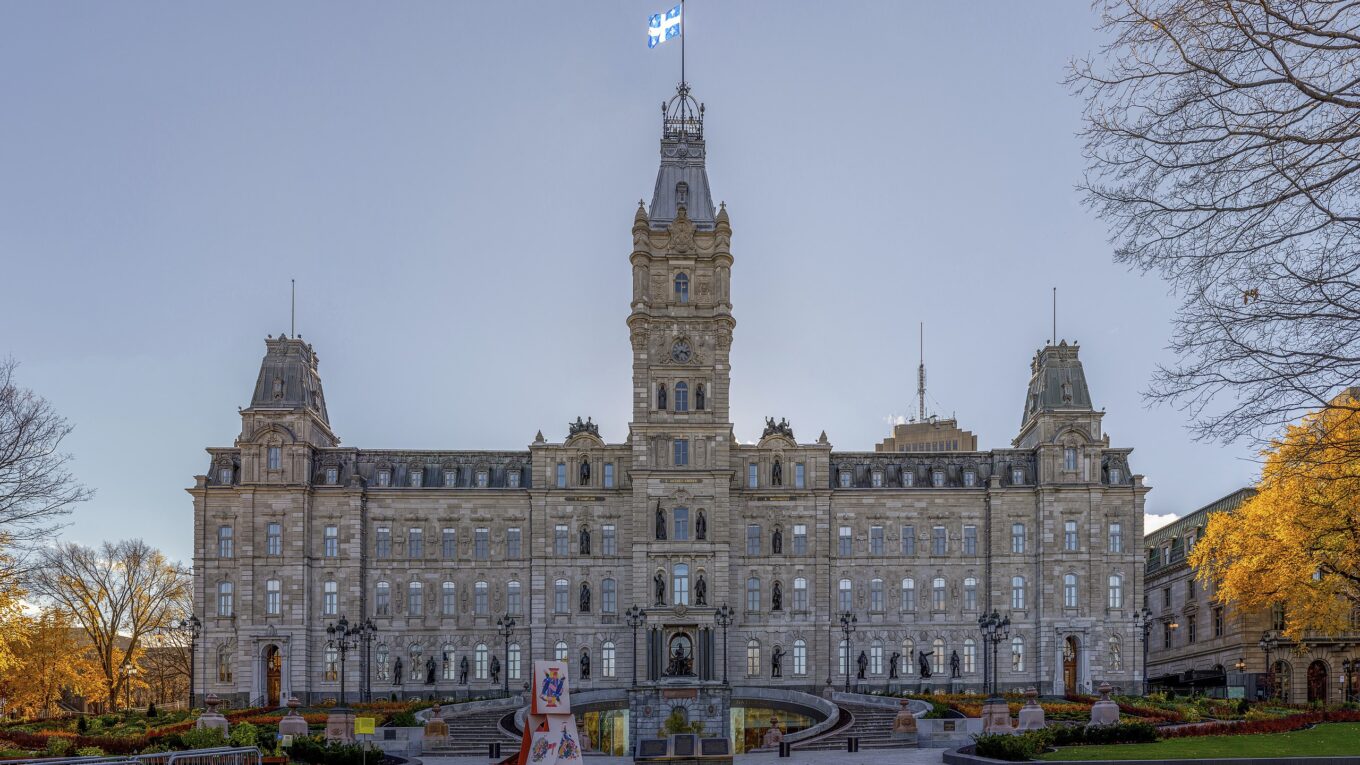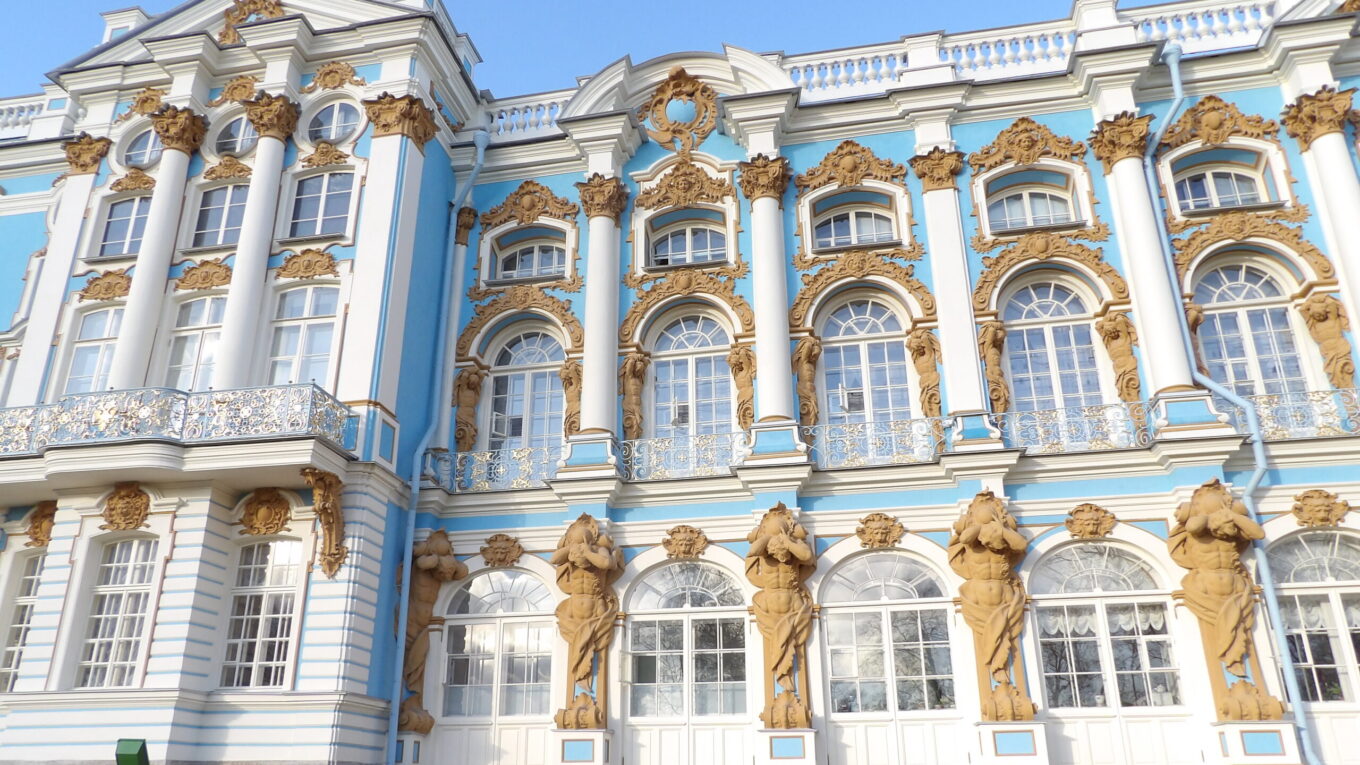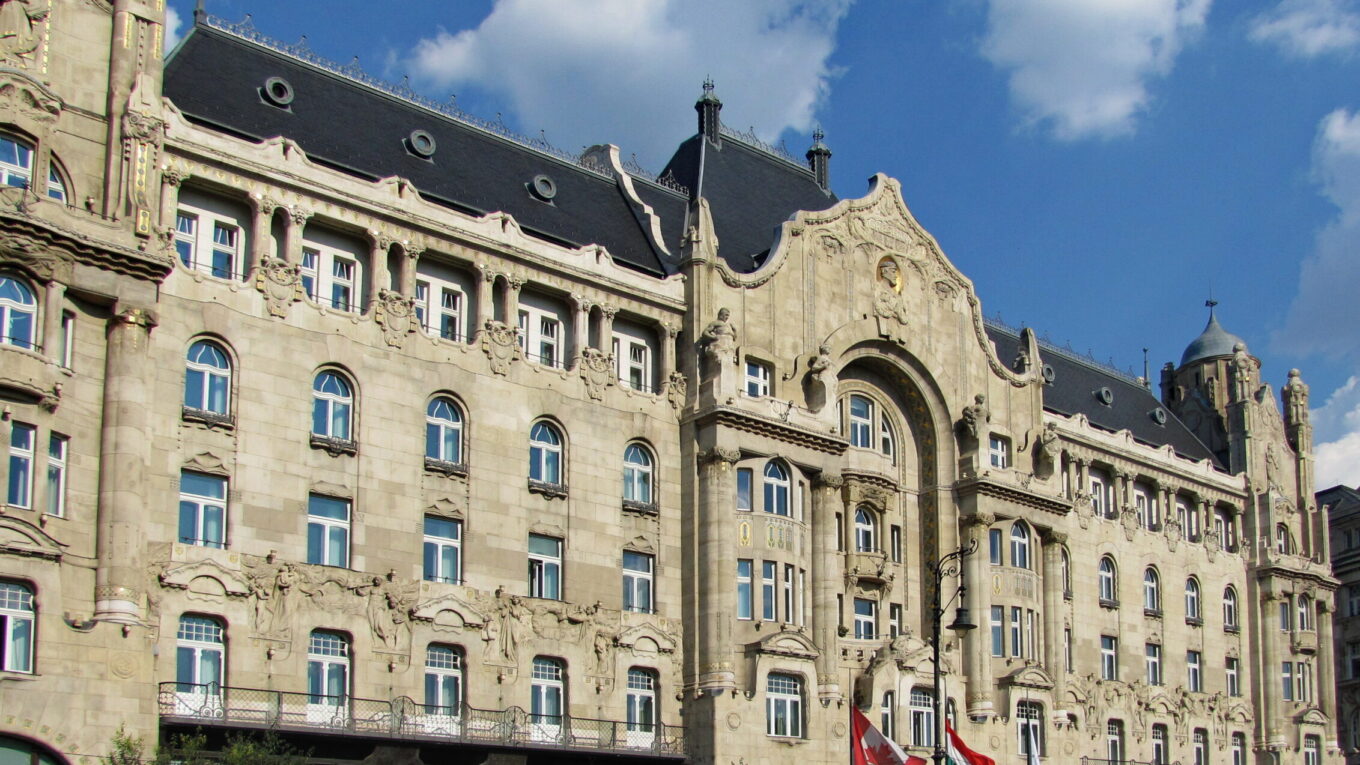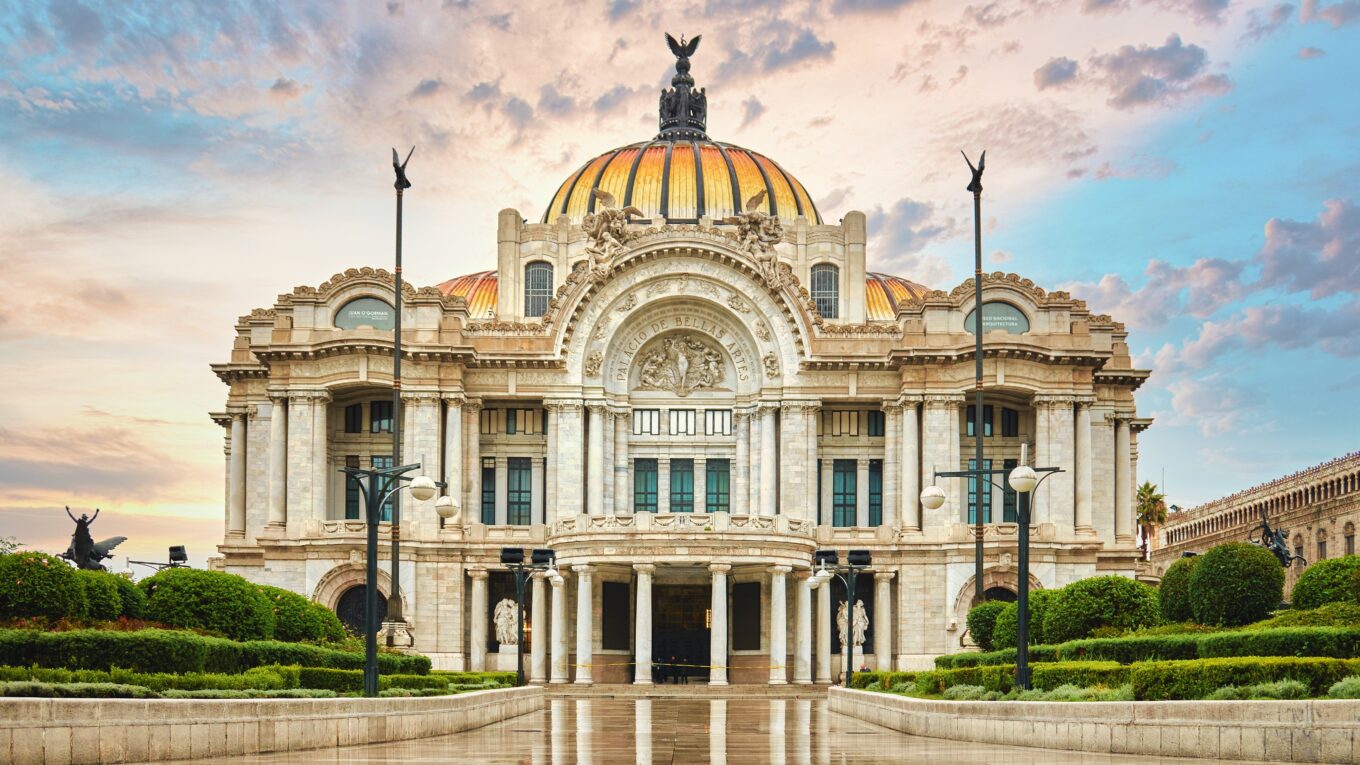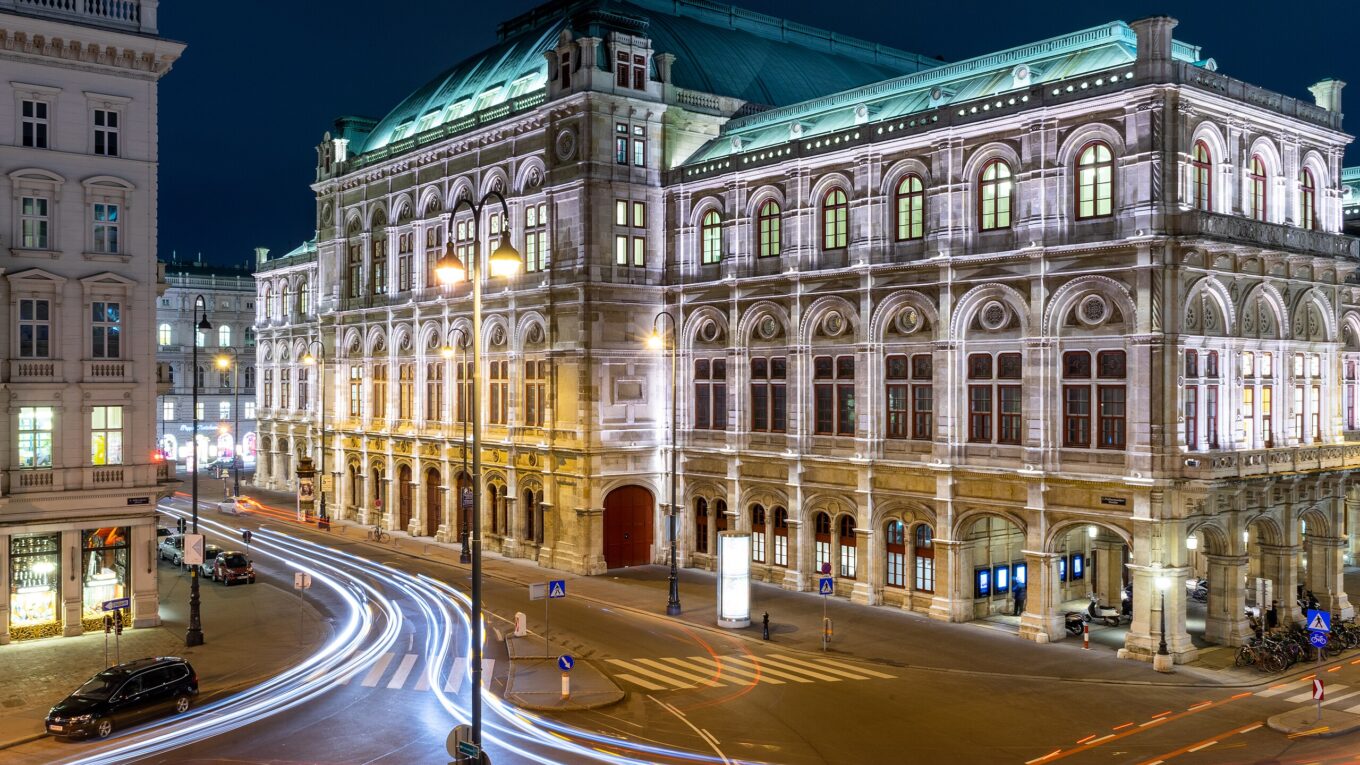Top 30 Examples of Ottoman Architecture
The Ottoman Empire was a sultanate that emerged in Anatolia during the early 14th century. At its peak, it controlled a large territory that included parts of the Balkans, North Africa, and the Arabian Peninsula. The Ottomans famously toppled the crumbling Byzantine Empire, and would make Constantinople their capital city in 1453. The Ottoman Empire constructed countless monuments, including mosques, palaces, bathhouses, and castles. The article below will highlight 30 of the world’s greatest examples of Ottoman Architecture and show how the Ottoman Style has changed over the centuries.
Who were the Ottomans?

The Ottomans were a Turkish group who originated in central Anatolia in modern-day Turkey.
The first Ottoman sultan was Osman I, a fearless warrior who won many battles against the Seljuk Turks and the Byzantine Empire.
By the mid-1300s, the Ottomans had a strong foothold in Anatolia and moved their capital to Bursa.
Over the next two centuries, the Ottoman Empire would dramatically expand, taking most of Anatolia and the Balkans. Sultan Mehmed II famously captured the city of Constantinople in 1453 and made it the capital of his empire.
The Ottoman Empire reached its peak during the reign of Suleiman the Magnificent. Suleiman was responsible for many of the empire’s largest and most ambitious building projects. He worked closely with the architect Mimar Sinan and constructed many of the large mosques that are still popular today.
By the 19th century, the Ottoman Empire was in a period of stagnation and decline. It lost several important territories like Egypt, and it faced immense pressure from neighboring states like the Russian Empire and the Austrian Empire.
During the early 20th century, the Ottomans formed an alliance with the German Empire and entered WWI on the side of the Central Powers. The Ottomans suffered terribly during the conflict, and the empire was disbanded in 1922. This led to the Turkish War of Independence. and the foundation of the modern nation of Turkey.
Phases of Ottoman Architecture
Early Ottoman Architecture
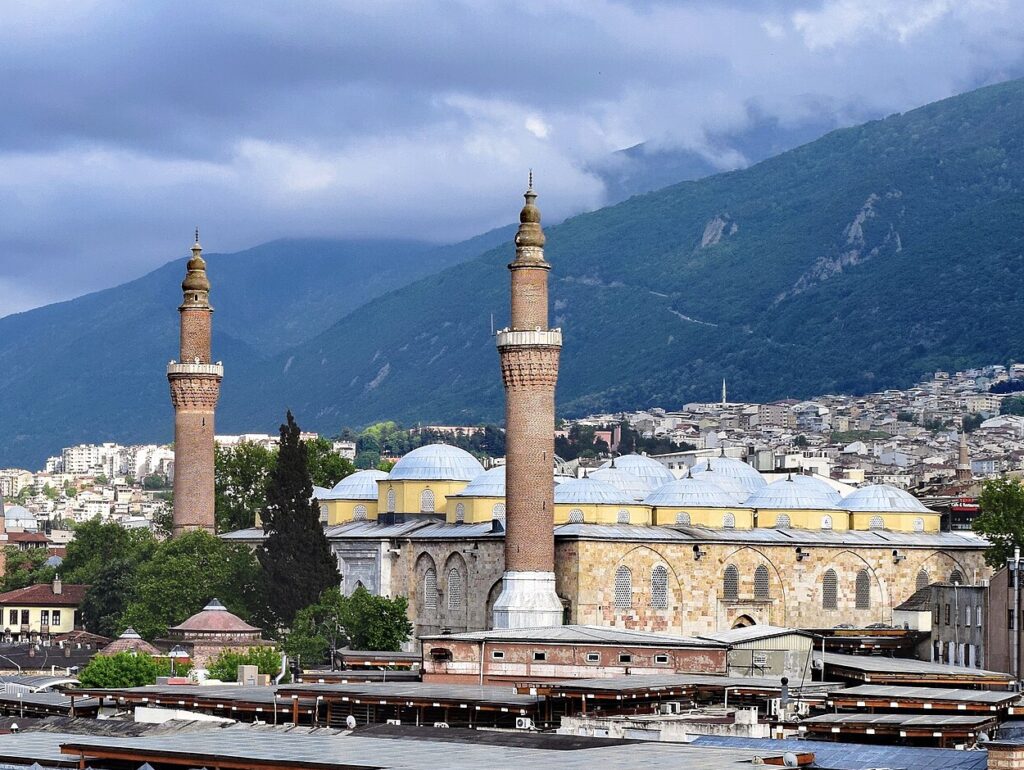
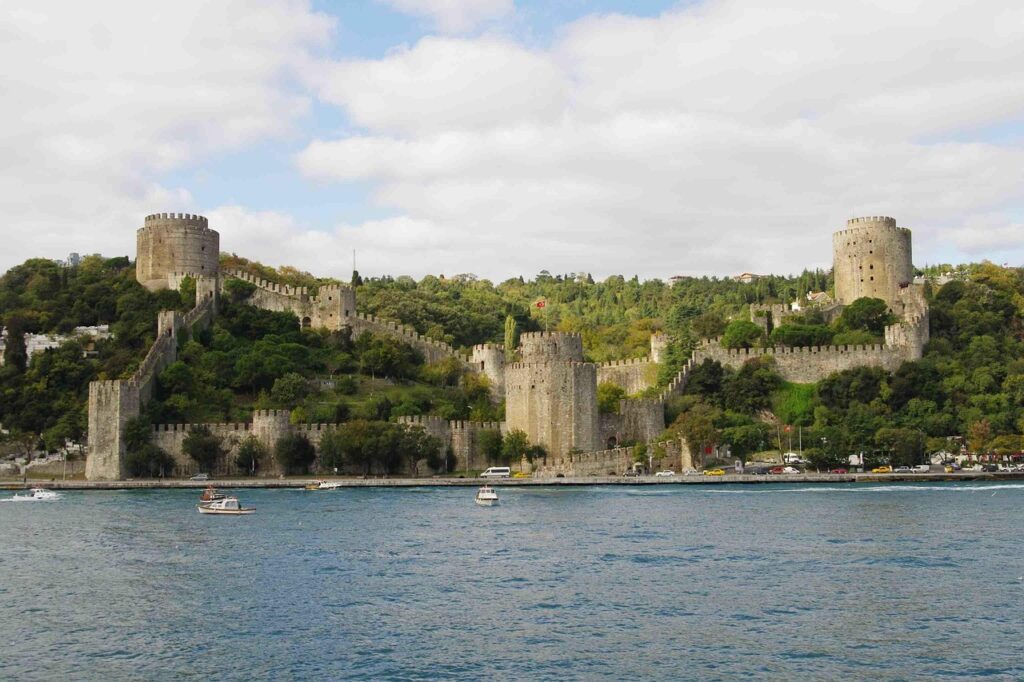
Right – Rumelihisarı Fortress, Istanbul
The first phase of Ottoman Architecture corresponds with the early years of the Ottoman Empire. Early Ottoman buildings are more simplified and traditional when compared to later ones. Most Early Ottoman Architecture is found in central Anatolia, centered around the city of Bursa. In the left image above, you can see the Grand Mosque of Bursa. This building was completed in 1399 and has a boxy and more subdued design than later Ottoman Mosques. The right image above shows an early Ottoman fortress known as the Rumelihisarı. This castle was constructed in 1452 by Mehmed II to assist with his capture of Constantinople.
Classic Ottoman Architecture
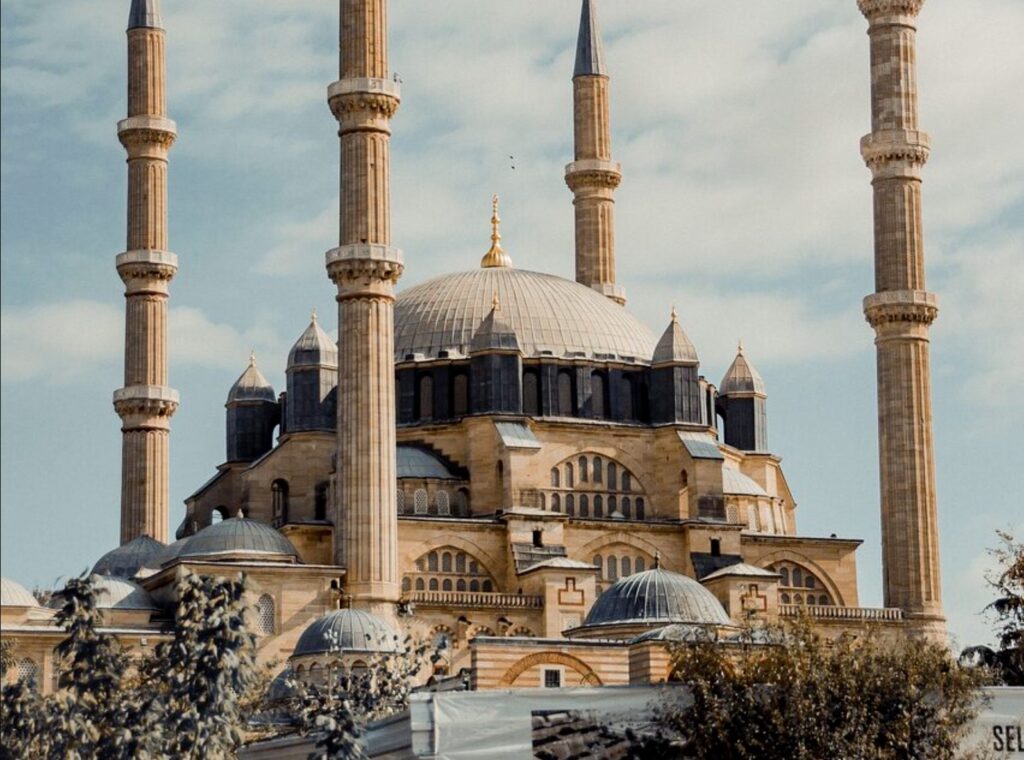

Right – Blue Mosque, Istanbul
The Classic Ottoman Period occurred during the peak of the Ottoman Empire. Some of the best works of Classical Ottoman Architecture are the mosques designed by master architect Mimar Sinan. The left image above shows the Selimiye Mosque in Edirne, Turkey. Mimar Sinan believed this was his greatest work, and its design was perfected through multiple iterations. The right image above shows the Sultan Ahmet Mosque in Istanbul. It contains many Classical Ottoman details like a large central dome and several pencil-like minarets.
Ottoman Baroque Architecture
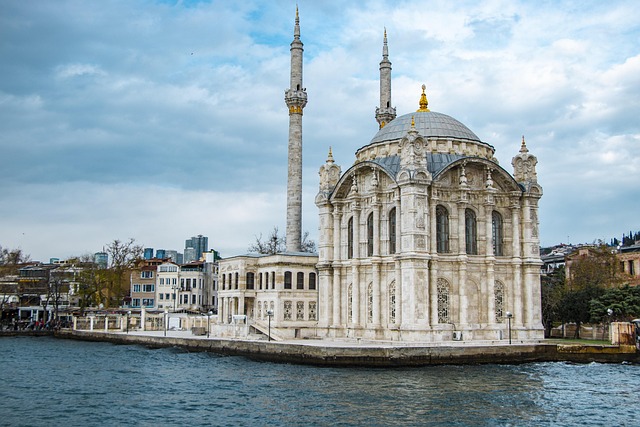

Right – Nusretiye Mosque, Istanbul
During the 18th & 19th centuries, the Ottoman Empire became more involved in European politics and society. The sultans entered alliances with different European Powers, and European culture began to influence Ottoman Art & Architecture. This process created the Ottoman Baroque Style, which borrowed extensively from European Baroque & Rococo Architecture. Both of the mosques in these images are in Istanbul, and they contain baroque elements like intricate carvings and gold details.
Late Ottoman Architecture
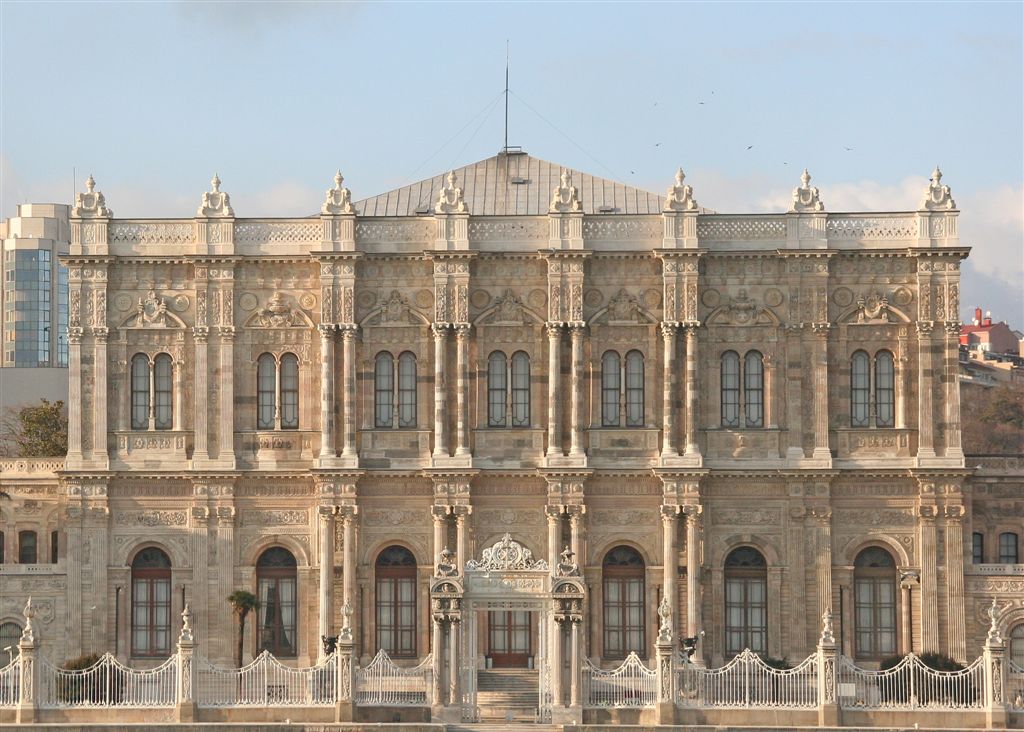
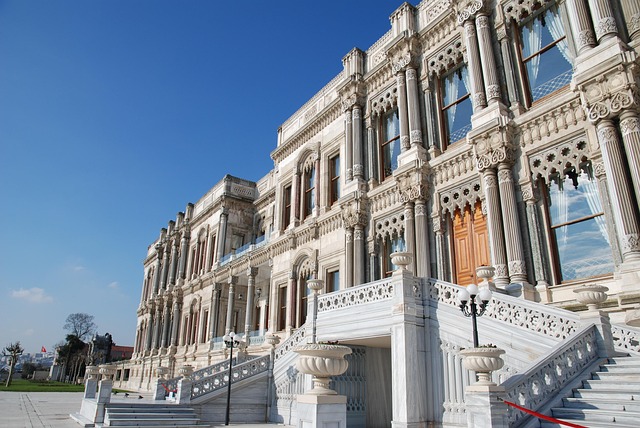
Right – Çırağan Palace, Istanbul
The final phase of Ottoman Architecture was the Late Ottoman Period. This phase coincided with the decline of the empire, when the Sultans overspent and refused to implement major reforms. The Sultans constructed several lavish palaces that rivaled the many Renaissance, Baroque, and Neoclassical ones found throughout Europe. These images show Dolmabahçe and Çırağan palaces. Both are located in Istanbul, overlooking the shores of the Bosporus Strait.
Elements of Ottoman Architecture
Domes
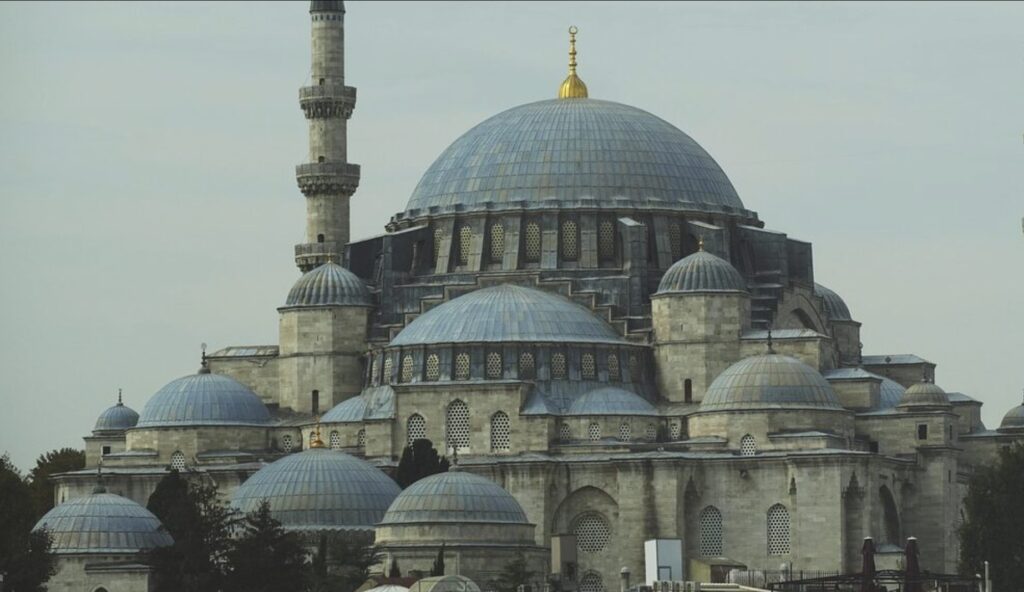
Domes are one of the most common elements in Ottoman Architecture. Domes were popular during the Classical Ottoman Period, and can be found on all of the mosques designed by Mimar Sinan. Sinan studied the domes left behind by the Byzantine Empire. He imitated buildings like the Hagia Sophia and borrowed some of the same structural components, like domes, buttresses, and half domes. The image above shows Süleymaniye Mosque in Istanbul. Here, the large central dome sits on two half domes, creating a massive, open interior space.
Minarets
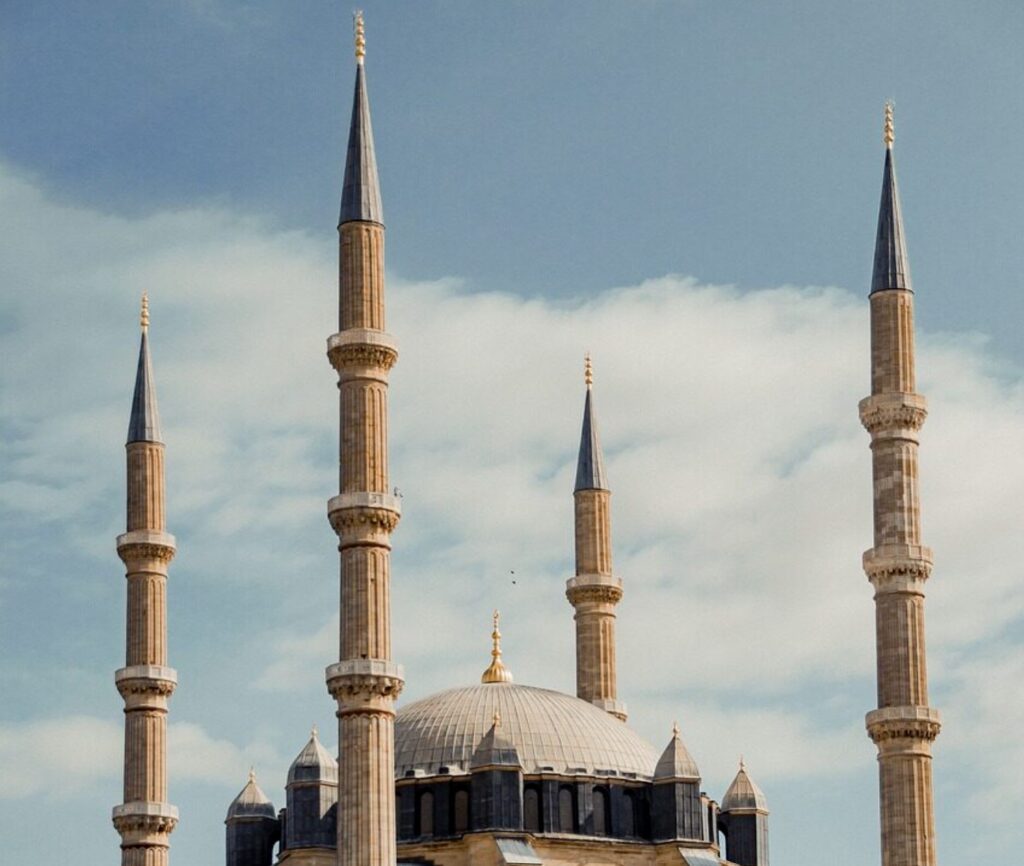
Minarets are another key component in Ottoman Architecture. Minarets existed long before the Ottoman Empire emerged, and the Ottomans created their own unique Minaret typology. Ottoman Minarets are typically pencil-shaped. They have long, often fluted, cylindrical shafts, topped by a conical-shaped cap. The image above shows the Selimiye Mosque in Edirne, which contains four typical Ottoman minarets.
Round & Pointed Arches
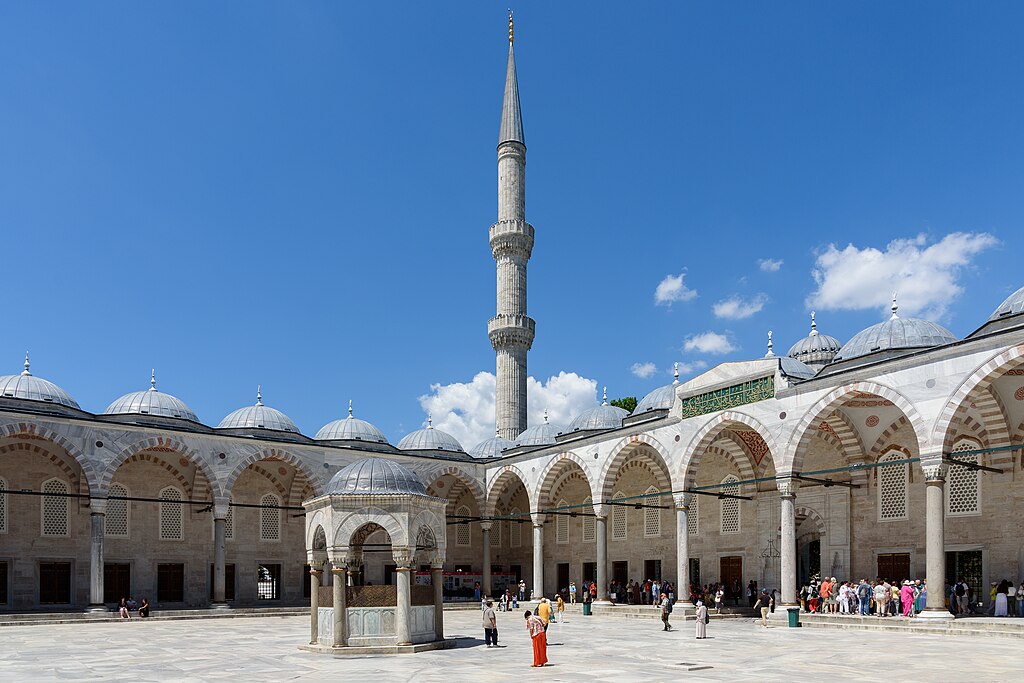
Ottoman Architecture varied drastically throughout the course of the Ottoman Empire. It was influenced by both Early Islamic and Byzantine Architecture. Because of these various influences, many Ottoman buildings contain a blend of different types of arches. These include rounded or Roman-style arches, pointed arches, and horseshoe arches. The image above shows the courtyard of Sultan Ahmet Mosque in Istanbul, which is lined with a continuous colonnade of pointed arches.
Intricate Tilework
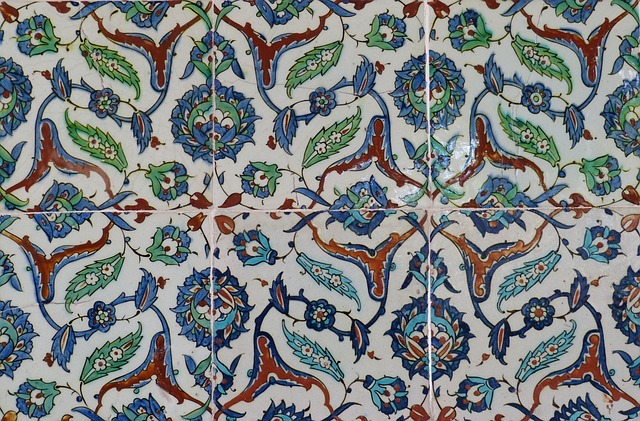
Intricate tilework is another element that repeats throughout Ottoman Architecture. Most Islamic architecture contains intricacy. Shapes, letters, and other imagery are often used to decorate buildings. The image above shows tiles within the Blue Mosque in Istanbul. The mosque gets its name from the various shades of blue and turquoise found throughout these tiles. Many Europeans who visited Constantinople during the peak of the Ottoman Empire would return, speaking of these intense, bright, beautiful blues. They called the color turquoise – after the Turks who created it.
Traditional Islamic Elements

Ottoman Architecture also contains a wide assortment of elements from traditional Islamic Architecture. These include Muqarnas, calligraphy, intricate geometries & repeating patterns. Ottoman Mosques are also outfitted with many traditional Islamic building components like Qiblas, Minbars, courtyards, and Ablution Fountains. The image above shows some muqarnas over the top of the entrance of the Green Mosque in Bursa, Turkey.
Evolution of the Pendentive Dome
The Ottomans created some of the largest and tallest domes on earth from the 15th to the 18th century. They took what they learned in different Byzantine buildings and adapted these same principles to create even larger domes. Many Ottoman Mosques are built utilizing the same format – with a pendentive dome over a large open prayer hall. These Pendentive Domes can be broken down into three main types:
- Type 01
- (4) Flat Walls
The simplest form of the pendentive dome is when the dome sits atop four flat walls. Although this method is more limiting structurally, it allows the most natural light to enter the central space.
- Type 02
- (2) Flat Walls & (2) Half-Domes
Another form of the pendentive dome is when the dome sits atop two flat walls and two half domes. This method lets in lots of light through the flat walls, and the half-domes also help carry the weight.
- Type 03
- (4) Half-Domes
The final form of the pendentive dome is when the central dome sits atop four separate half-domes. This setup really distributes the weight of the central dome, and it also creates the largest interior space.
What are the best examples of Ottoman Architecture?
The Ottoman Empire was a powerful nation that left behind countless impressive buildings and monuments. The list below will highlight 30 of the World’s Greatest Examples of Ottoman Architecture and show the evolution and influence of the Ottoman Style.
1. Süleymaniye Mosque – Istanbul, Turkey
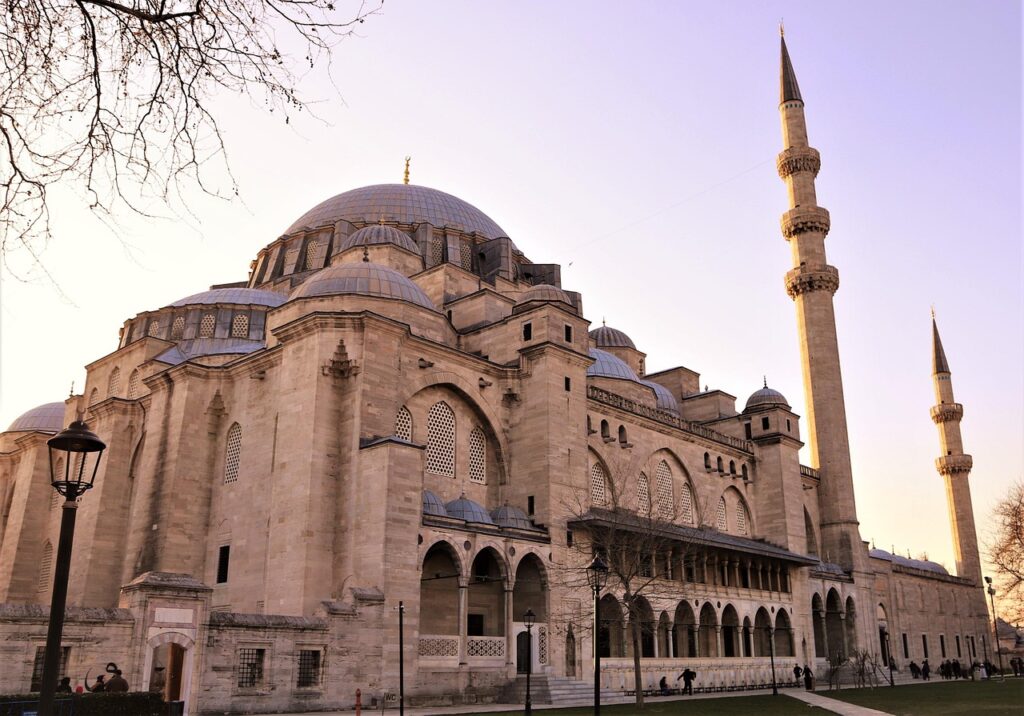
One of the great architects of the Ottoman era was Mimar Sinan. He worked throughout the 1500s, completing some of the empire’s most magnificent projects. Mimar studied the Pendendtive Dome throughout his entire career, and he was still creating new designs well into his 90s. Süleymaniye is considered to be Mimar Sinan’s greatest work. It’s the largest and most lavish mosque he ever designed, and it’s a direct evolution of many of his previous buildings. Süleymaniye was commissioned by Suleiman the Magnificent, the Ottoman Empire’s greatest Sultan.
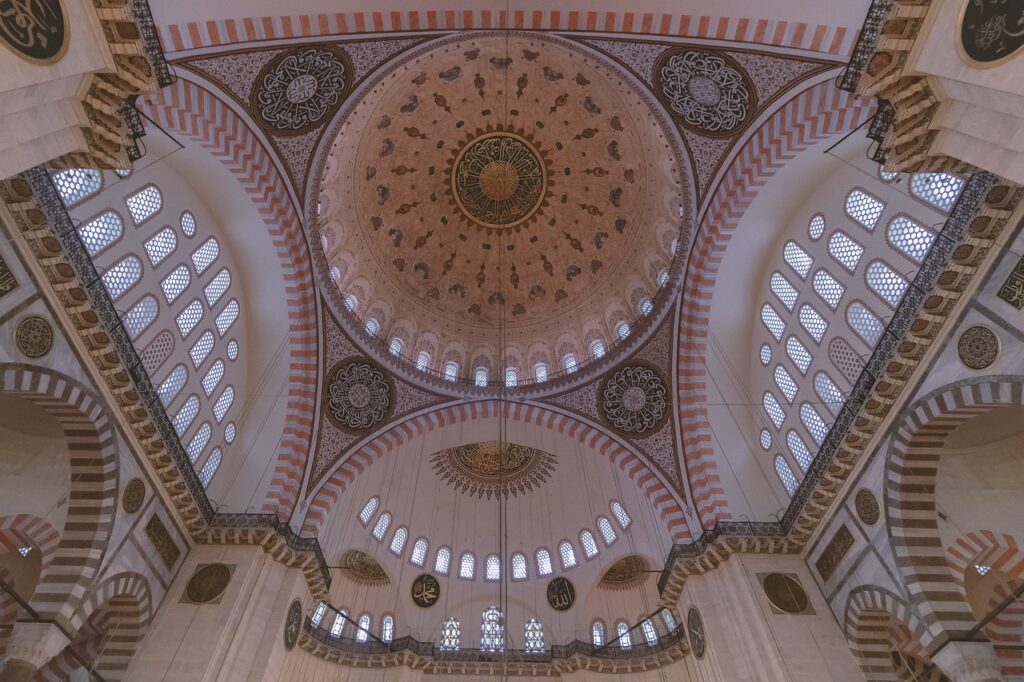
The design of Süleymaniye features a massive pendentive dome, which sits on two half domes and two flat walls. This design replicates the same structure found at the Hagia Sophia and it’s one of the three main ways that the Ottomans and Byzantines constructed Pendentive Domes. This option creates a large open space that still has a lot of light. Some argue that Mimar Sinan and Suleiman wanted to create a building that exceeded the beauty and elegance of the Hagia Sophia. Thanks to its position on a large central hill, Süleymaniye can be seen from all over the city, and it is one of the most emblematic buildings in Istanbul.
2. Sultan Ahmed Mosque – Istanbul, Turkey
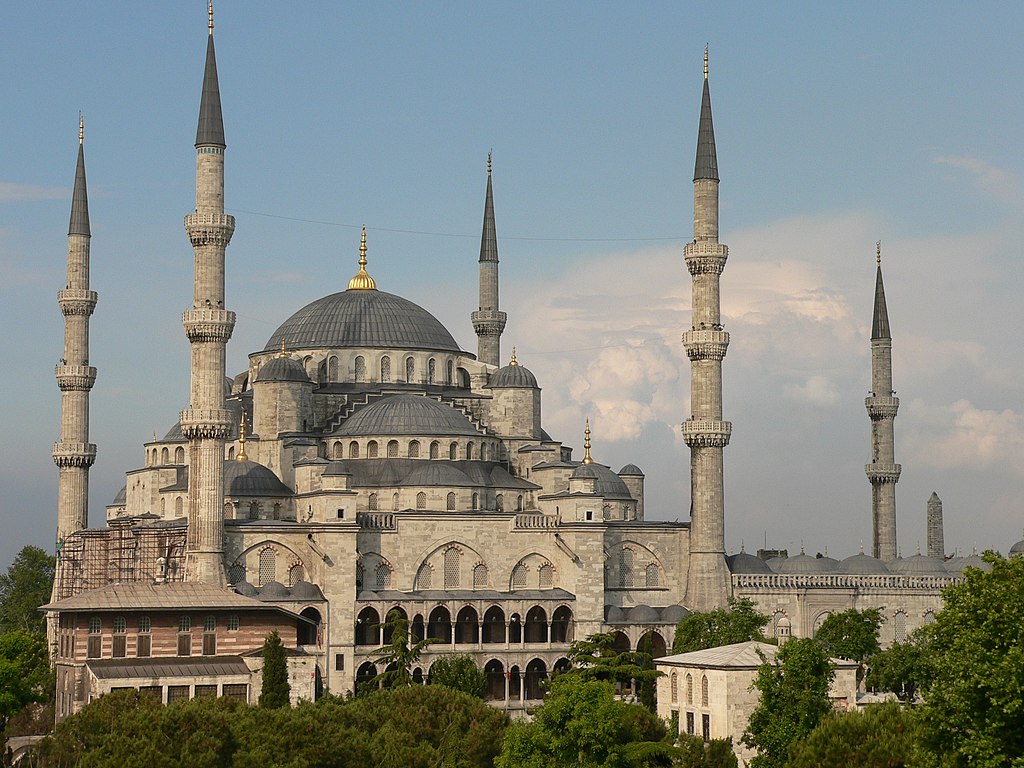
Sultan Ahmed Mosque was built by Sultan Ahmed I, who ruled the Ottoman Empire from 1603 to 1617. The Mosque is located in the eastern portion of Istanbul’s historic center, overlooking Sultanahmet Square. The building has a typical Ottoman design, with a large enclosed courtyard, several towering minarets, and a massive prayer hall sitting beneath a pendentive dome. Unlike at Süleymaniye, the Dome of Sultan Ahmed Mosque sits atop four half domes.


Sultan Ahmed Mosque is often referred to as the Blue Mosque because of the tiles that decorate the interior. Most of these feature intricate patterns and calligraphy, and the same light-blue color is found throughout. Sultan Ahmed Mosque is one of the most visited sites in all of Istanbul, and it still holds frequent religious services. Along with several other important Ottoman & Byzantine buildings, the Sultan Ahmed Mosque is protected as part of a UNESCO World Heritage Site.
3. Topkapı Palace – Istanbul, Turkey
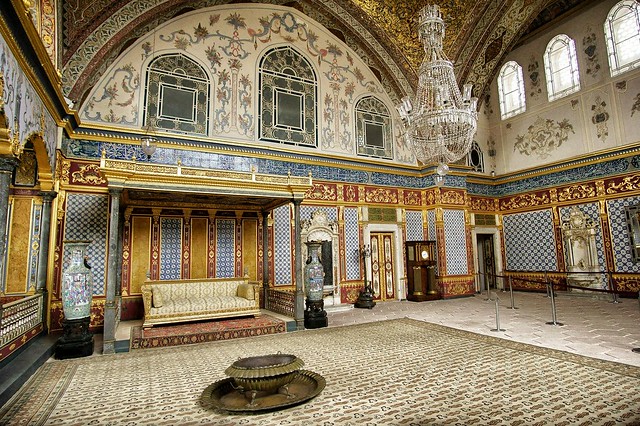
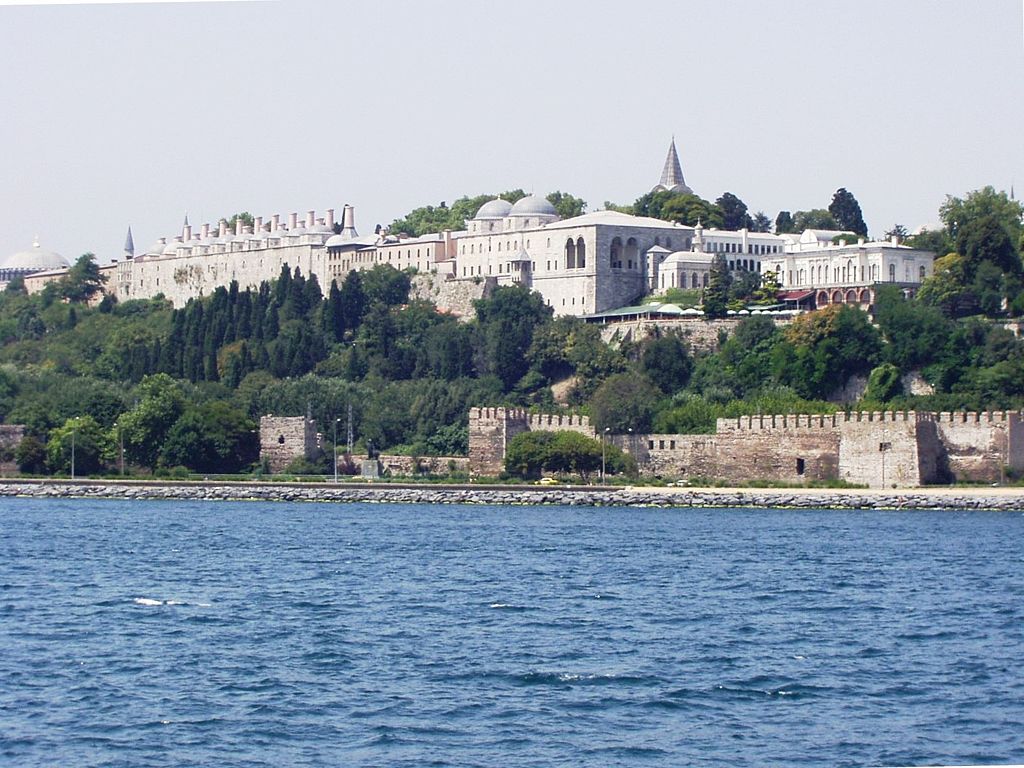
Like all great ruling dynasties, the Ottoman Sultans spent a lot of money and energy on their royal palaces. From the 15th century until 1853, Topkapı Palace served as the home of the sultans and their families. The palace is a labyrinth of different buildings, constructed at various points in history. One of the most impressive spaces within the palace is the Imperial Hall, which you can see in the left image above. It contains the imperial throne and is decorated with light blue tiles, fine furniture, and ceramics.
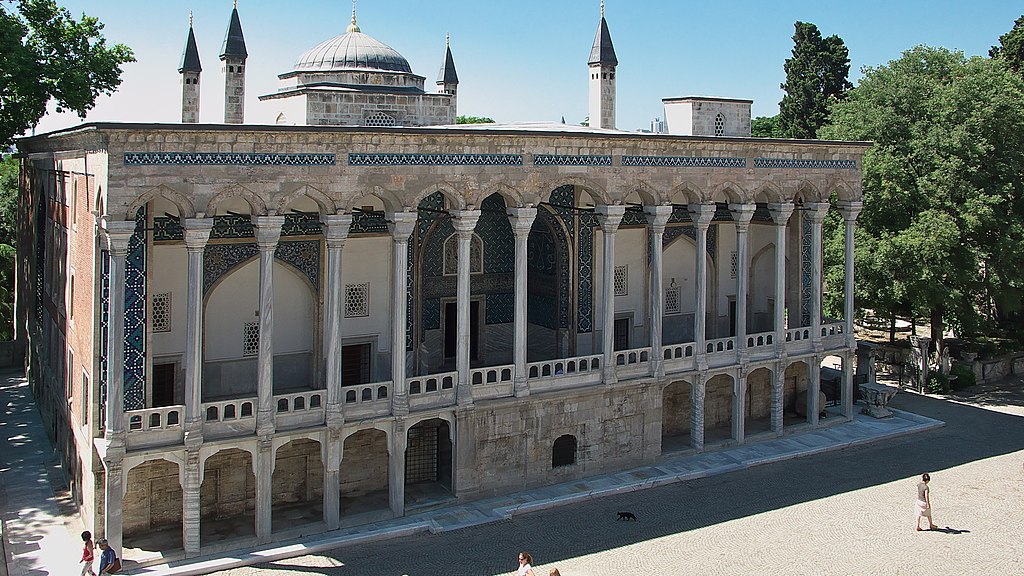
One of the most well-known buildings within Topkapi Palace is the Tiled Kiosk. It was constructed in 1472, just a few years after the Ottoman Conquest of Constantinople. The small structure is richly decorated with tiles, decorated in the Turquoise Blue color found throughout the architecture of Istanbul. Today, the Tiled Kiosk is now part of the Istanbul Archeological Museum.
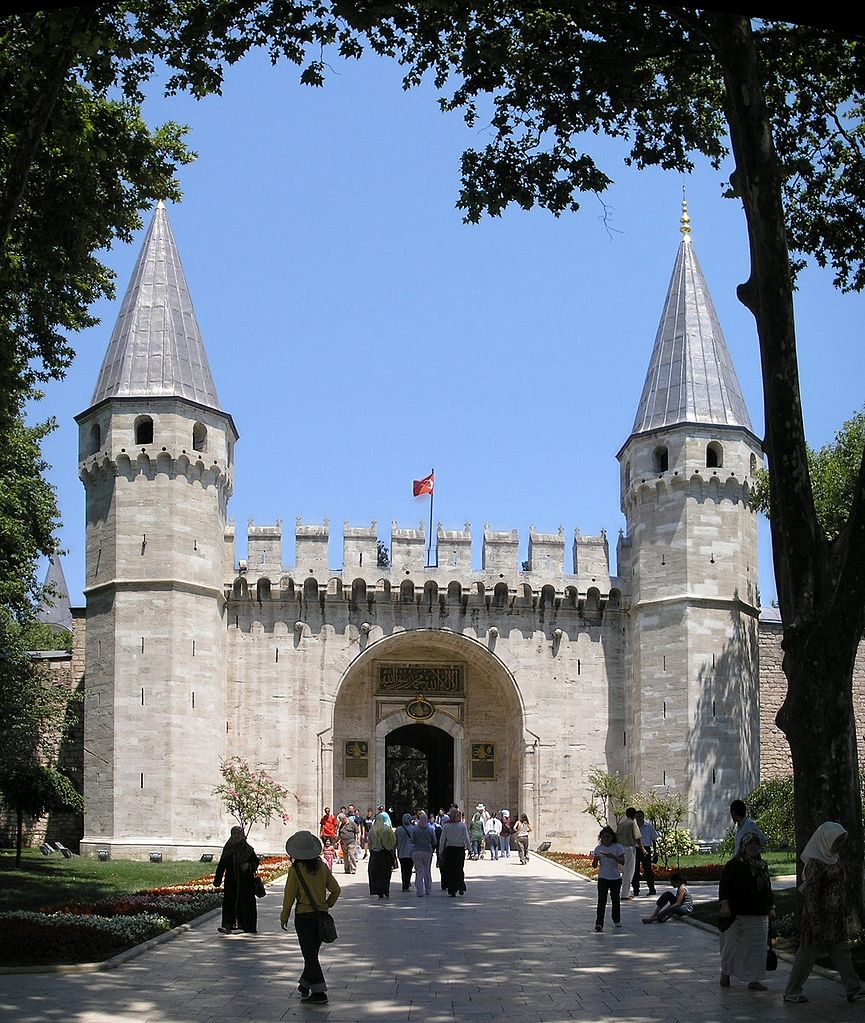
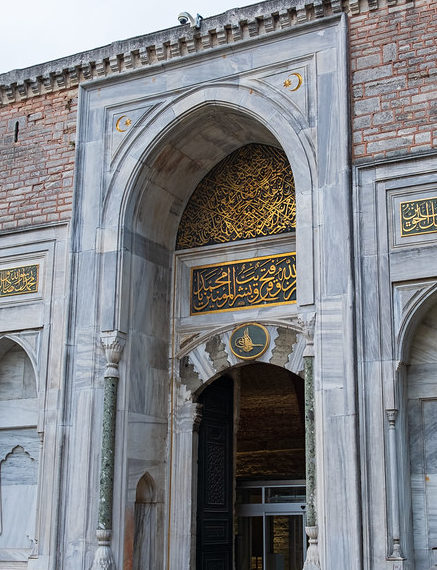
Topkapı Palace is located on the eastern edge of Istanbul, in an area well protected by the city’s Defensive Walls. Today, most of the building has been converted into a museum, and visitors are free to roam the palace halls and gardens and enjoy pristine views of the waters around Istanbul.
4. Dolmabahçe Palace – Istanbul, Turkey
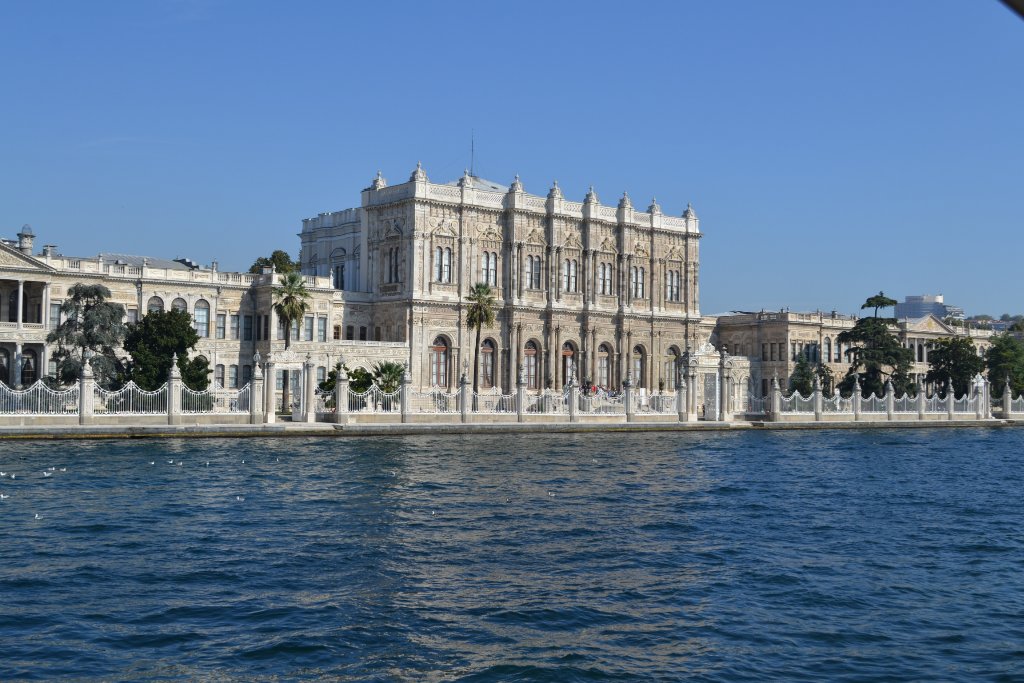
Dolmabahçe Palace is one of several grand palaces constructed during the Late Ottoman Period, along with Çırağan and Beylerbeyi palaces. It’s located about 2 miles (3.2 km) from central Istanbul on the shores of the Bosporus. Dolmabahçe Palace was completed in 1856, and it originally functioned as a residence for the sultans and as an administrative center for the Ottoman government.
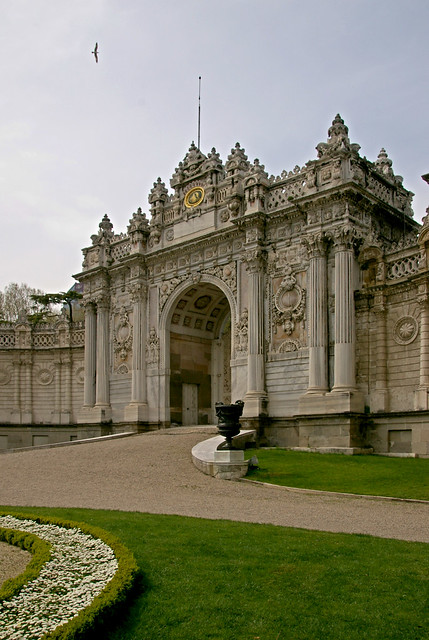

Dolmabahçe Palace illustrates the strong connection between the Ottoman Empire and Europe at this point in history. The building borrows many elements from European styles like Baroque and Rococo Architecture. The palace also has many classical details like Corinthian Columns, cornices, and ballustrades. The left image above shows the main gateway to Dolmabahçe Palace, which incorporates a large Triumphal Arch.
5. Selimiye Mosque – Edirne, Turkey


Selimiye Mosque is regarded as one of the greatest buildings of the Classical Ottoman Period. It was one of the final projects of the Ottoman Architect Mimar Sinan. Selimiye Mosque was completed in 1575, during the peak of the Ottoman Empire. It contains all of the typical elements developed by Sinan, many of which he borrowed from earlier Byzantine buildings, like the Hagia Sophia. Selimiye Mosque has a large central dome that sits atop a series of arches, which bring in lots of natural light. The mosque also contains typical Ottoman Minarets, and many other Islamic design elements like Muqarnas and pointed arches.
6. New Mosque – Istanbul, Turkey

The New Mosque is another incredible work of Ottoman Architecture in Istanbul. Construction began in 1597 and was carried out in phases until the 1660s. The mosque has many typical Ottoman elements, like pincil-shaped minarets and a large pendentive dome. The New Mosque sits on the edge of a body of water in Istanbul known as the Golden Horn. It separates the oldest part of the city from the Galata neighborhood.
7. Grand Mosque of Bursa – Bursa, Turkey

The Grand Mosque of Bursa is an early work of Ottoman Architecture located in the empire’s former capital. The mosque was commissioned by Emperor Bayezid I, who ruled from 1389 until 1402. The Grand Mosque of Bursa shows how Ottoman buildings looked during the early period, when they more closely resembled early Islamic Architecture. The Grand Mosque of Bursa has a low roof with several uniform domes. It’s boxier, and its prayer hall is less airy and open.
8. Rumelihisarı Fortress – Istanbul, Turkey

The Rumelihisarı is a work of Ottoman Architecture located a few miles up the Bosporus from Istanbul. It was commissioned by Mehmed II in 1452, shortly before he conquered Constantinople. The castle was designed to cut the city off from the upper portion of the Bosporus Strait. The Rumelihisarı has many of the same characteristics as other Medieval Castles. Its completion helped the Ottoman Empire expand across the Bosporus and take most of the Balkans.
9. Ortaköy Mosque – Istanbul, Turkey
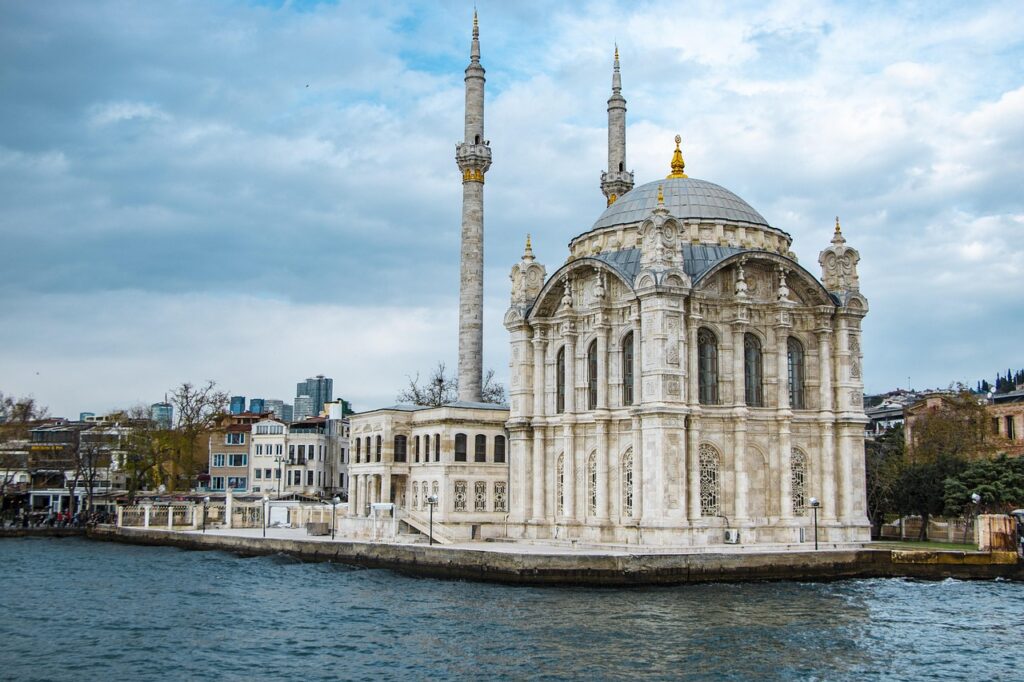
The Ortaköy Mosque is a work of Ottoman Baroque Architecture located in the Ortaköy neighborhood of Istanbul. It’s located on the edges of the Bosporus, and its design combines elements from both Ottoman and Baroque architecture. The Ortaköy Mosque is more intricate than the buildings of the Classical Ottoman Period, and it has materials and details that are influenced by European buildings.
10. Suluhan Nasuh Paşa Hanı – Beypazarı, Turkey
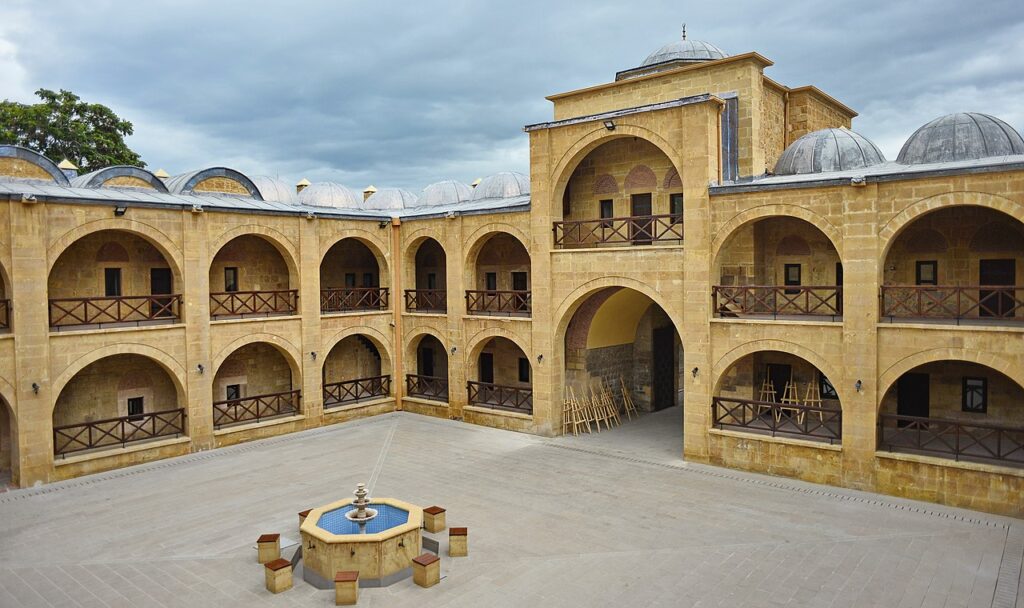
The Suluhan Nasuh Paşa Hanı is a work of Ottoman Architecture located about 62 miles (100 km) outside Ankara. It served as a Caravanserai that helped connect several cities within the Ottoman heartland. Caravanserais are common throughout Anatolia and the Middle East, and they served as outposts along major trade routes. The Suluhan Nasuh Paşa Hanı was constructed from 1508 to 1511 during a transitional period between the Early and Classical Ottoman Eras. It contains many typical details like domes and round arches.
11. Fountain of Ahmed III – Istanbul, Turkey
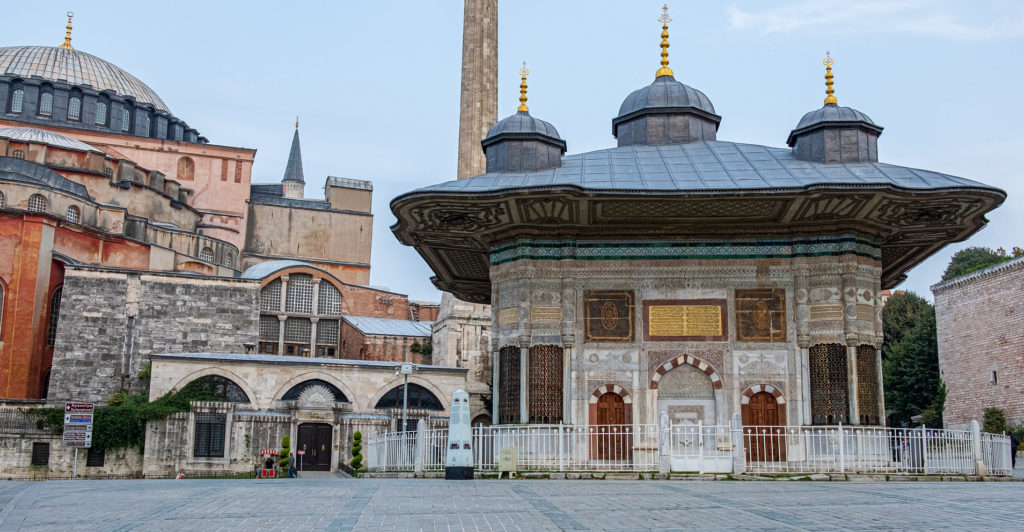
The Ottomans utilized fountains throughout their cities to provide fresh water to the public. The Fountain of Ahmed III is often regarded as the greatest Ottoman Fountain ever built. It was constructed in 1728, and its design was influenced by Baroque and Rococo Architecture. The Fountain of Ahmed III is located in Istanbul, just outside the Hagia Sophia. It was an important monument throughout the late Ottoman Period, and it provided water to the city for several centuries.
12. Ishak Pasha Palace – Doğubayazıt, Turkey

Ishak Pasha Palace is a work of Ottoman Architecture that was continuously modified over time. It contains a blend of influences, with elements from Seljuk Architecture and the Early Ottoman Style. Work began on the palace in the late 1600s and continued for over 100 years. The palace contains an assortment of spaces. It has several courtyards, a bathhouse, a mosque, and a mausoleum. Today, the Ishak Pasha Palace is located on the Eastern edges of Turkey, not far from the border with Armenia.
13. Çırağan Palace – Istanbul, Turkey
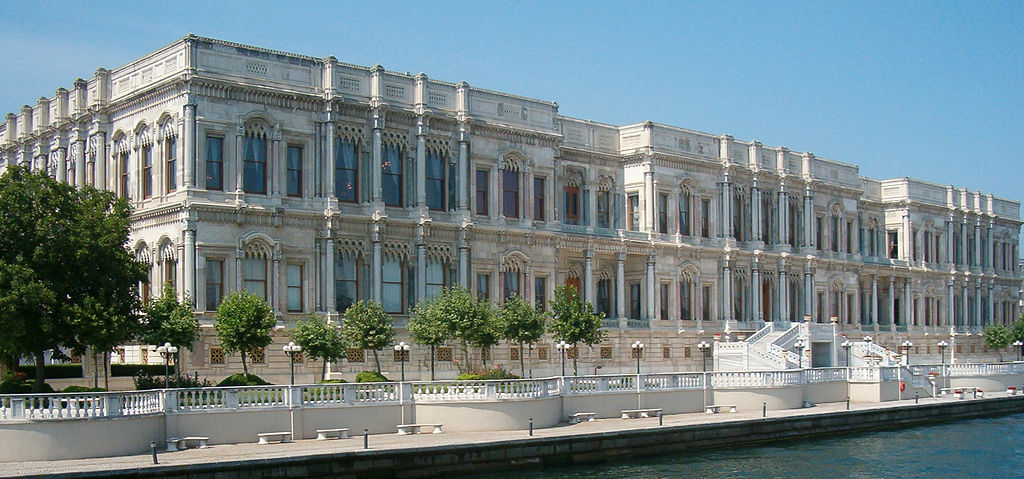
Çırağan Palace is one of the final palaces built in the late stages of the Ottoman Empire. It’s located in Istanbul, on the Western shore of the Bosporus Strait. Construction on the palace took place from 1863 to 1867, and the sultans specifically designed it with all the modern comforts of the era. Çırağan Palace had running water, flushing toilets, and even electricity. After a fire in the early 20th century, the interior of Çırağan Palace was completely redone. It now houses a modern, luxurious, 5-star hotel.
14. Rizvaniye Mosque – Şanlıurfa, Turkey
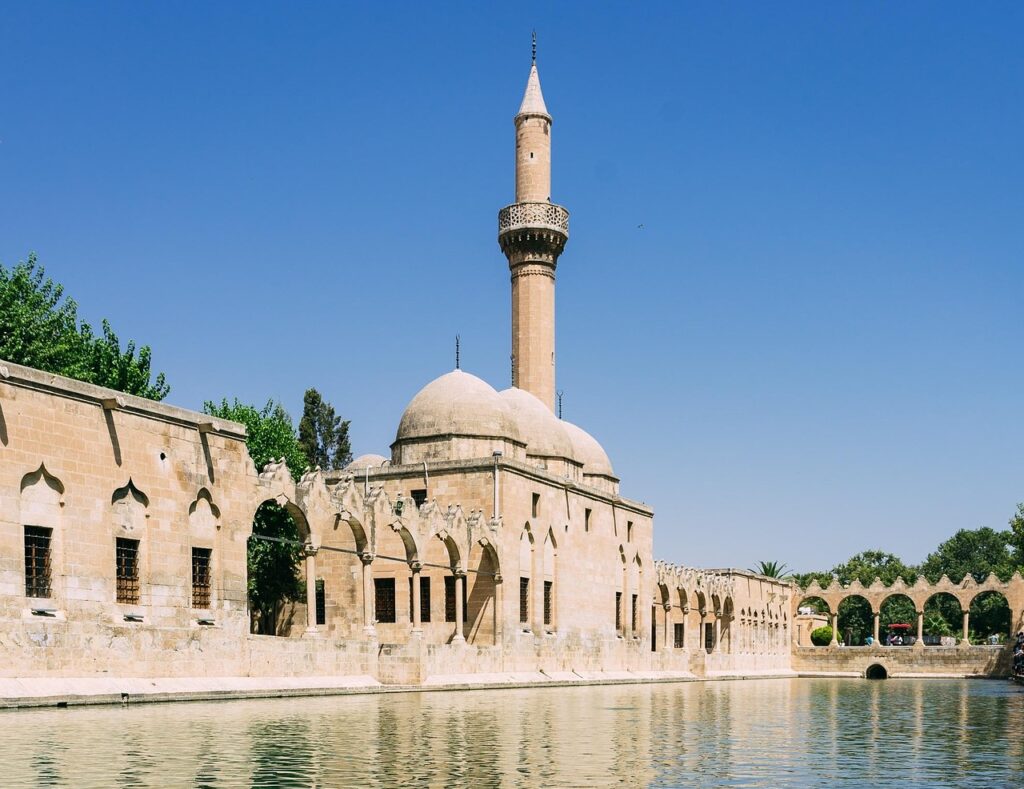
Şanlıurfa is a modern Turkish city that sits in the same location as the ancient city of Edessa. Edessa was a prominent Greek and Roman city, home to many impressive historic monuments. After the Ottomans took over, they constructed many buildings, including a grand mosque. Rizvaniye Mosque was built in the mid-1700s, and its design incorporates an adjacent pool that is much older. The single Ottoman-style Minaret is one of the building’s most notable features.
15. Mihrimah Sultan Mosque (Edirnekapı) – Istanbul, Turkey
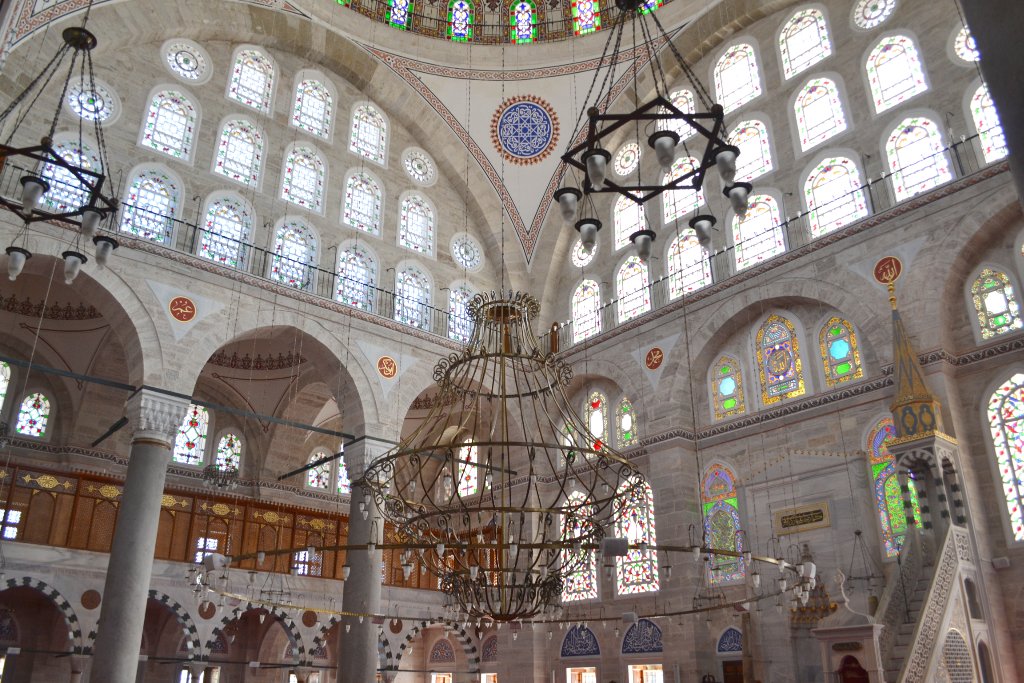
Mihrimah Sultan Mosque dates to the Classical Ottoman Period and is located in Istanbul. It was designed by Mimar Sinan and constructed during the reign of Suleiman the Magnificent. The mosque has one of the brightest interiors of any mosque in Istanbul. This is because it has four flat walls directly beneath its dome. These walls have windows that let in lots of natural light. The Mihrimah Sultan Mosque also shows great usage of colored-glass, which gives the interior a unique glow.
16. Green Mosque – Bursa, Turkey
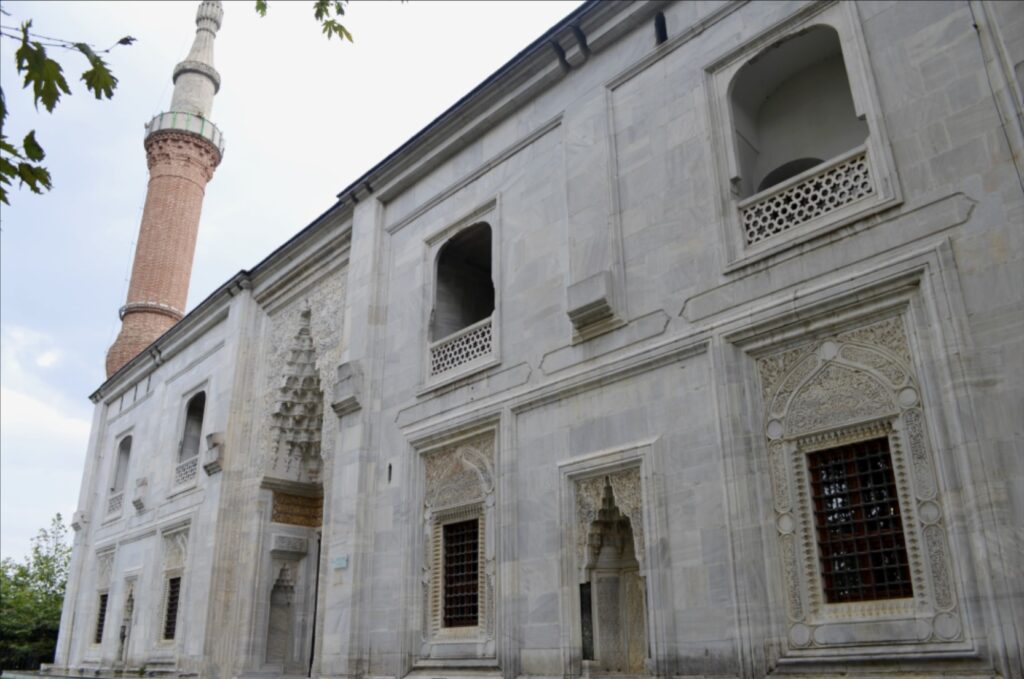
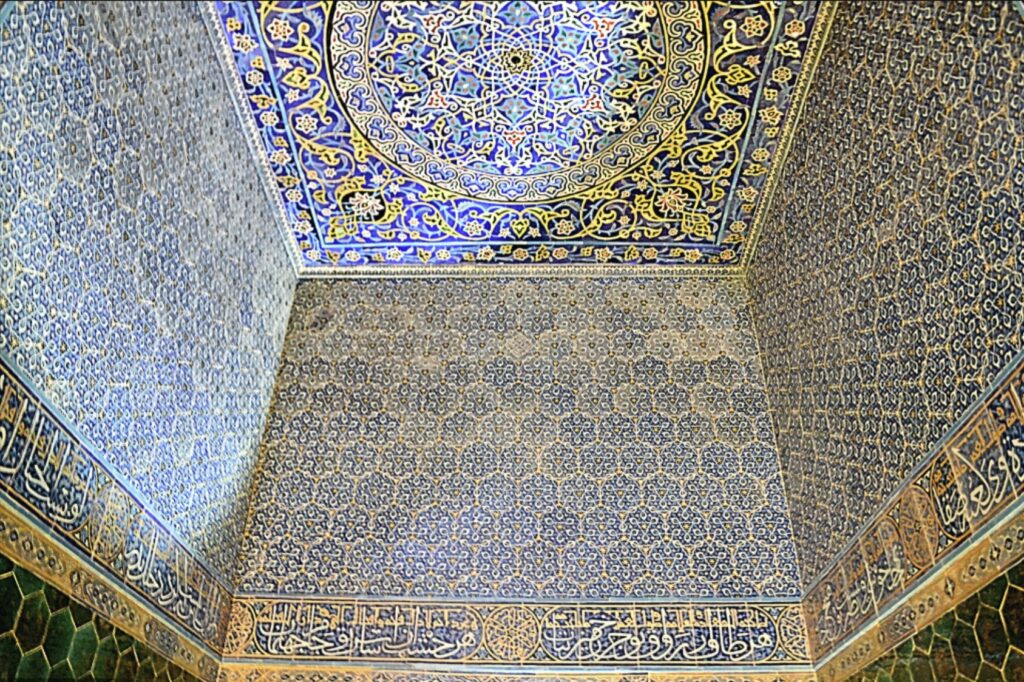
The Green Mosque is one of several notable works of Ottoman Architecture in the former imperial capital of Bursa. The mosque was constructed in the early 1400s and was one of the final projects completed in Bursa before the capital was moved to Constantinople. The Green Mosque is part of a large complex of buildings, which also includes a mausoleum, a madrasa, and a bathhouse. Like a lot of other Early Ottoman buildings, the Green Mosque was strongly influenced by the buildings of the Seljuk Turks and the Umayyad Caliphate.
17. Fatih Mosque – Istanbul, Turkey

The Fatih Mosque is another large Ottoman-style building located in the historic Fatih District of Istanbul. The building was constructed on the site of a much older work of Byzantine Architecture known as the Church of the Holy Apostles. The church was torn down after the Fall of Constantinople in 1453, and some of its most important artifacts were later moved to the Istanbul Archaeological Museum. The Fatih Mosque was completed in 1771 during the reign of Mustafa III.
18. Bayburt Castle – Bayburt, Turkey
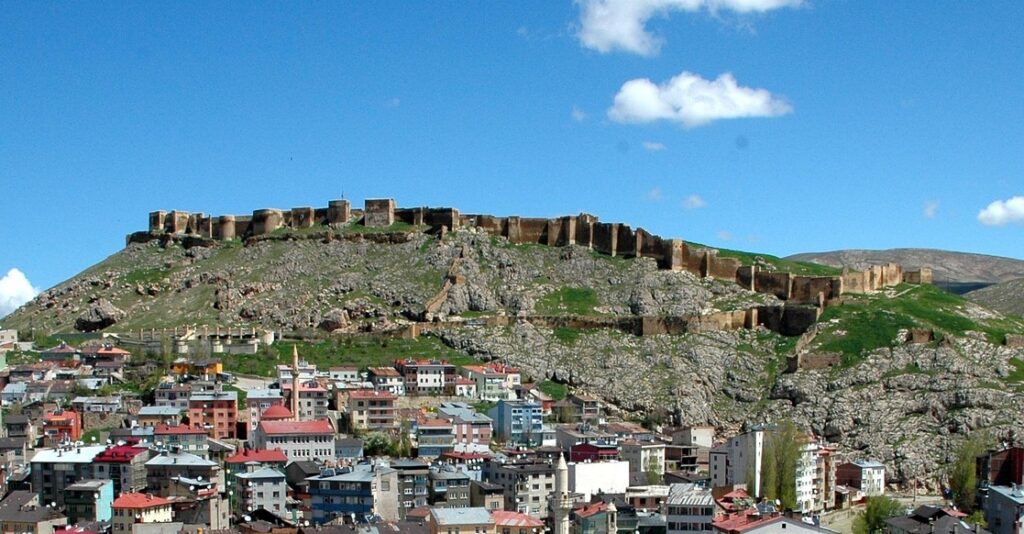
Bayburt Castle is one of several Medieval Fortifications constructed by the Ottoman Empire as they expanded their territory in Anatolia. The walls of the castle stretch for over half a mile (1 km) and are perched on a hilltop overlooking the town of Bayburt. Bayburt Castle originally dates to the Byzantine period, but, its walls and towers were refurbished and expanded by the Ottomans.
19. Grand Bazaar – Istanbul, Turkey
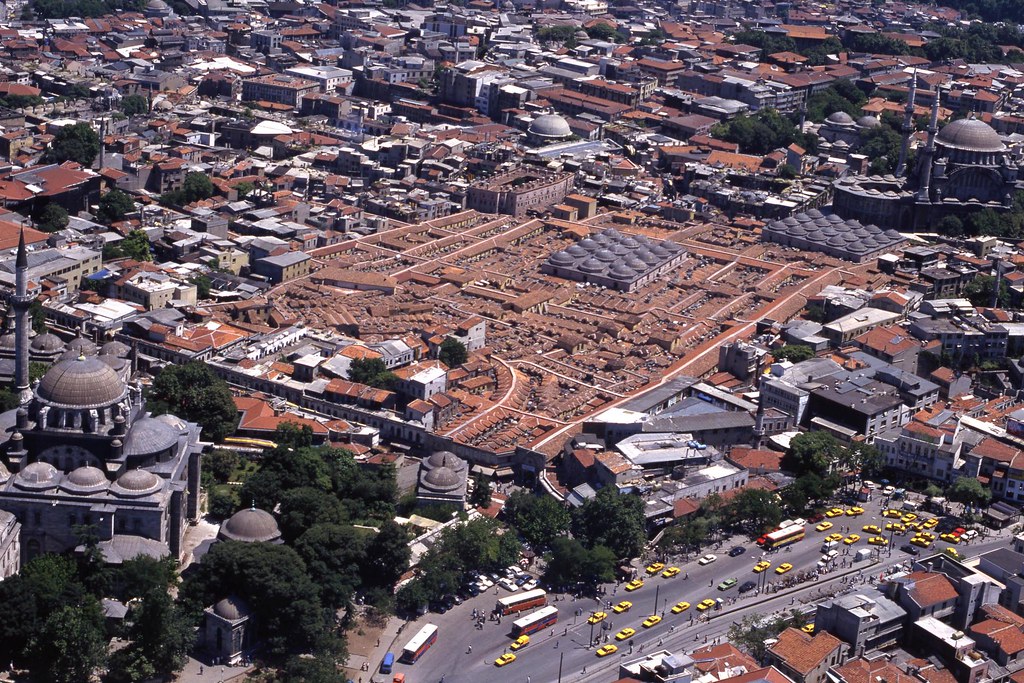
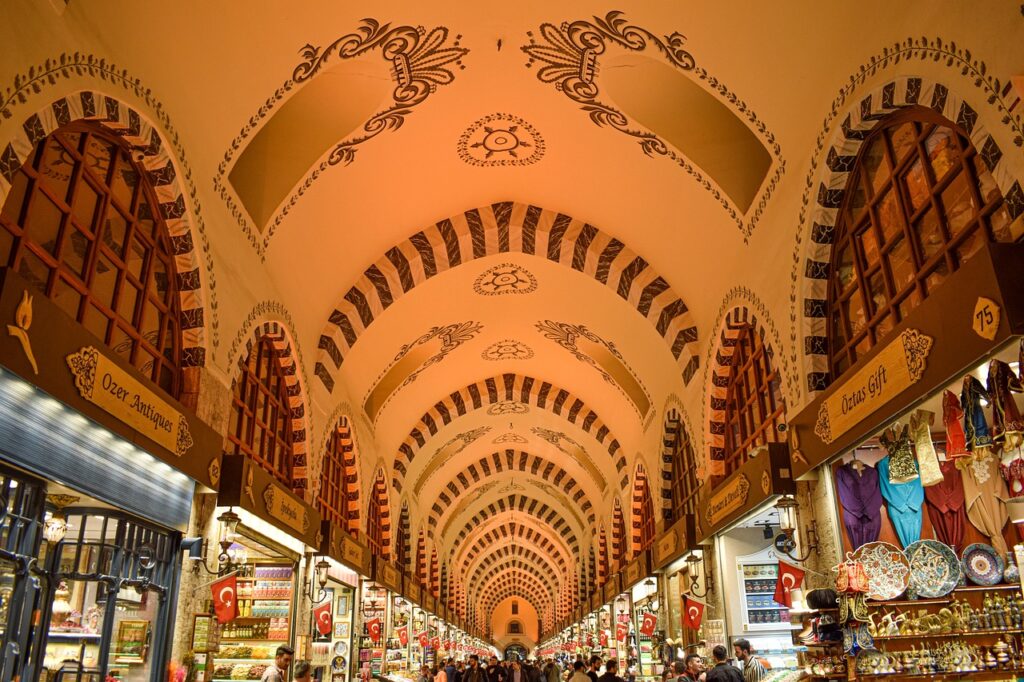
(left) Photo by SALT Research from flicker
The Grand Bazaar is one of Istanbul’s most well-known buildings. The bazaar is an array of winding corridors lined with shops and retailers. It’s constantly filled with life and energy, and visitors can buy just about anything here, including souvenirs, rugs, furniture, food, and spices. The Grand Bazaar also contains its own mosque and several fountains. Its design features several elements of Ottoman Architecture, including domes and varied types of arches.
20. Tophane Fountain – Istanbul, Turkey

The Ottoman Sultans constructed several elaborate fountains throughout Istanbul. This was a way to provide freshwater and help keep the peace with the local population. Tophane Fountain was built in the mid-1700s, and it contains several elements from Islamic Architecture, like pointed arches, muqarnas, and the use of calligraphy. Like the fountain of Ahmed III, the Tophane Fountain also borrows some elements from the Baroque & Rococo styles.
21. Ayasuluk Fortress – Ephesus, Turkey
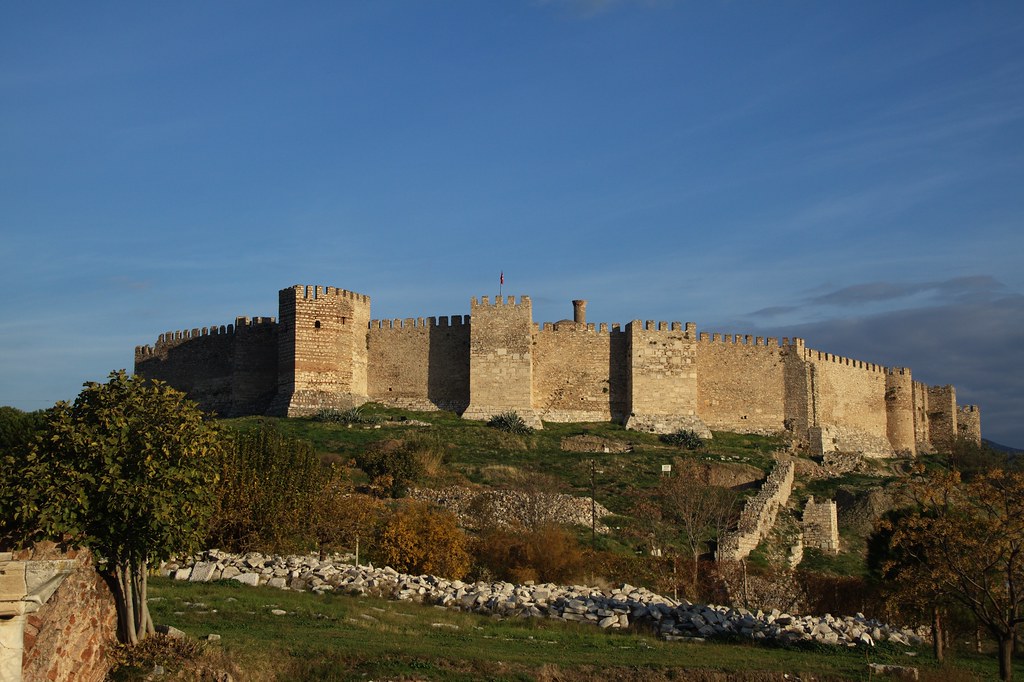
Ayasuluk Fortress is a hilltop castle located in western Turkey. It originated as a Roman Fortress, but it was captured and greatly expanded by the Ottoman Empire. The fortress sits atop Ayasuluk Hill, which also contains a large ancient archeological site. Ayasuluk Hill is part of the ancient city of Ephesus, which contains an assortment of Roman & Byzantine monuments, including a library, forum, basilica, and a large theater. Today, all of these monuments are protected as a UNESCO World Heritage Site.
22. Ihlamur Pavilion – Istanbul, Turkey
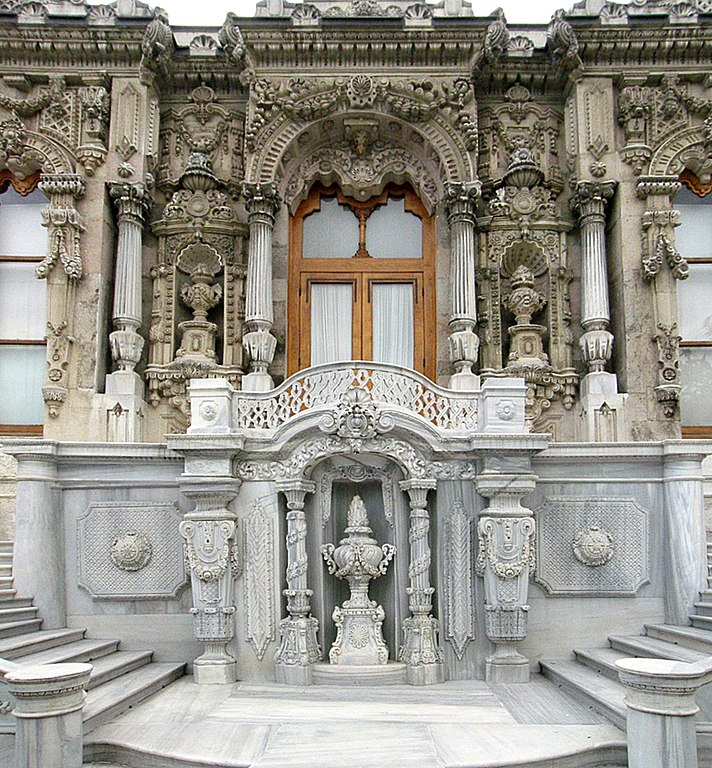
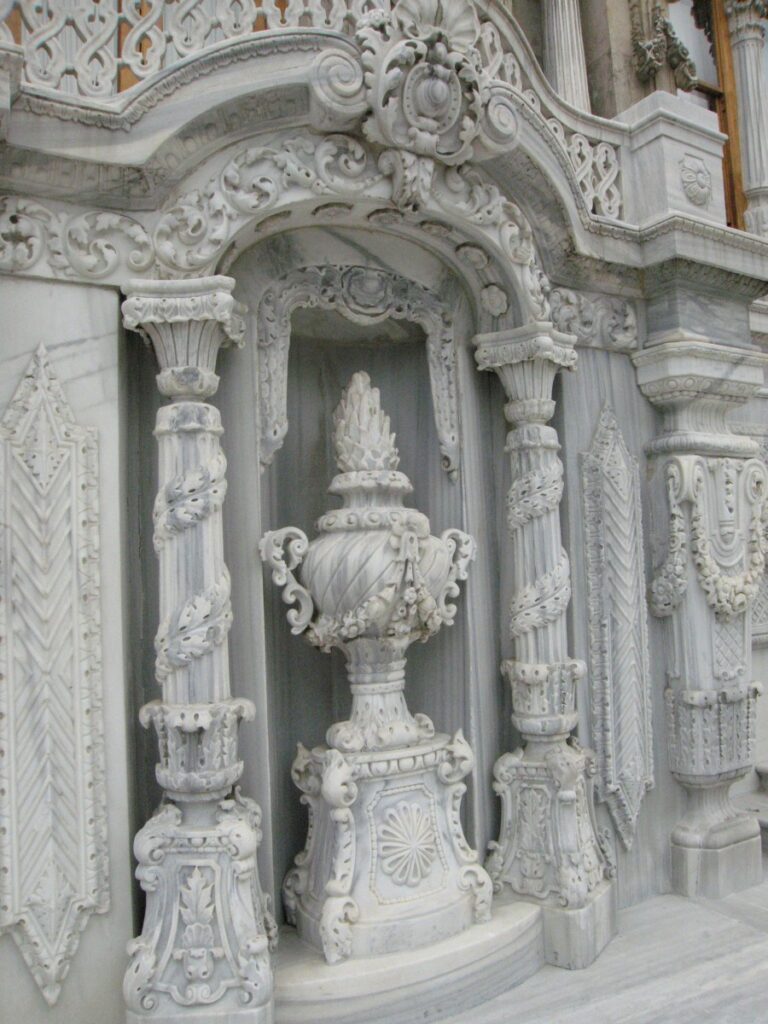
The Ihlamur Pavilion is a small, late-Ottoman building located on the European side of Istanbul. It is one of the most elaborate structures built in the Ottoman Baroque Style. It has intricate details and sculptural elements all influenced by European Baroque and Rococo Architecture. The Ihlamur Pavilion was completed in the mid-19th century around the same time as similarly designed buildings like the Ortaköy Mosque and Dolmabahçe Palace.
23. Tzistarakis Mosque – Athens, Greece
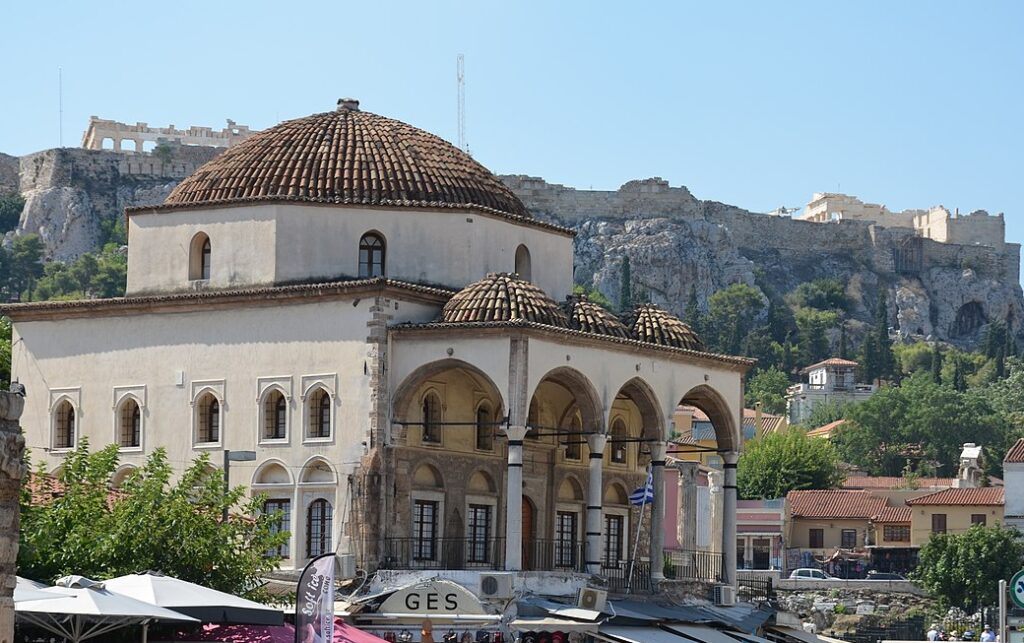
Tzistarakis Mosque is one of the most well-known works of Ottoman Architecture in Athens. It was completed in 1759, and it contains many Ottoman elements like domes and a blend of round and pointed arches. Tzistarakis Mosque is located alongside many older ancient buildings. It sits right next to the Roman Forum and the Library of Hadrian, and about a quarter mile (.4 km) from the base of the Acropolis.
24. Nusretiye Mosque – Istanbul, Turkey

Nusretiye Mosque is a great example of Ottoman Baroque Architecture and one of many incredible mosques in Istanbul. The design utilizes elements from European Baroque Architecture, like gold leaf and classical building components. Nusretiye Mosque was built in the early 1800s and was one of the final Ottoman Baroque Mosques. In the image above, you can see how the building is positioned, with a view overlooking the Golden Horn and Istanbul’s Fatih district.
25. Silk Bazaar – Bursa, Turkey

The Ottoman Empire was located at the crossroads between Europe and Asia. As a result, the empire grew wealthy from trade along the great Silk Road. Silk was so profitable that a special silk bazaar was constructed in Bursa. The Bazaar was able to house a large assortment of vendors, all competing to sell their goods in one courtyard. The Bursa Silk Bazaar contains many of the typical elements of Ottoman Architecture, including domes, a blend of arches, and a combination of Byzantine and Islamic influences.
26. Mosque of Pasha Qasim – Pécs, Hungary
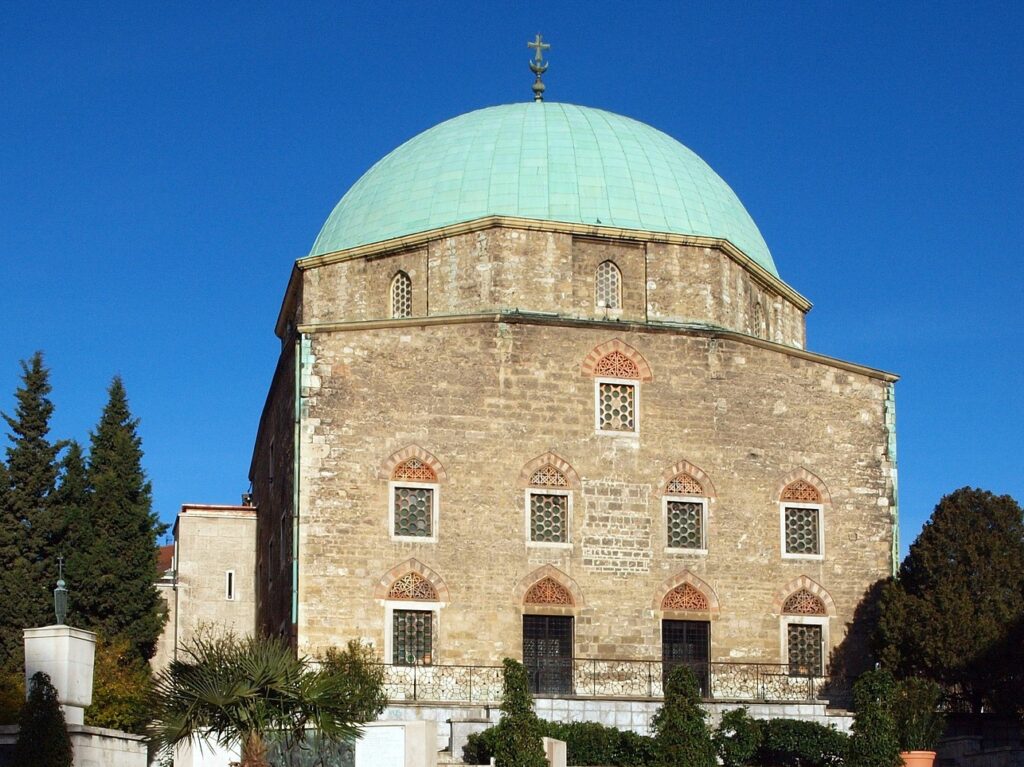
At its peak, the Ottoman Empire controlled most of modern-day Hungary. The Ottomans took the city of Budapest in 1541, and they even besieged Vienna on multiple occasions. Today, there are a few sporadic works of Ottoman Architecture in Hungary, including the Mosque of Pasha Qasim in Pécs. The building was constructed during the mid-1500s, and it functioned as a mosque for several centuries. Eventually, Pécs was retaken by the Austrian Empire, and the building was converted to a church in 1702.
27. Tomb of Sultan Abdul Hamid – Istanbul, Turkey

The Tomb of Sultan Abdul Hamid is a large Ottoman Mausoleum located in the heart of Istanbul. It’s located near the original Forum of Constantinople, where the Column of Constantine still stands. The tomb was built for Abdul Hamid I, who ruled the Ottoman Empire from 1774 until 1789. The building incorporates many elements from European styles. It has characteristics from both Baroque and Neoclassical architecture, and the facade contains round arches, Corinthian Columns, friezes, and a cornice.
28. Küçük Hasan Pasha Mosque – Chania, Crete, Greece
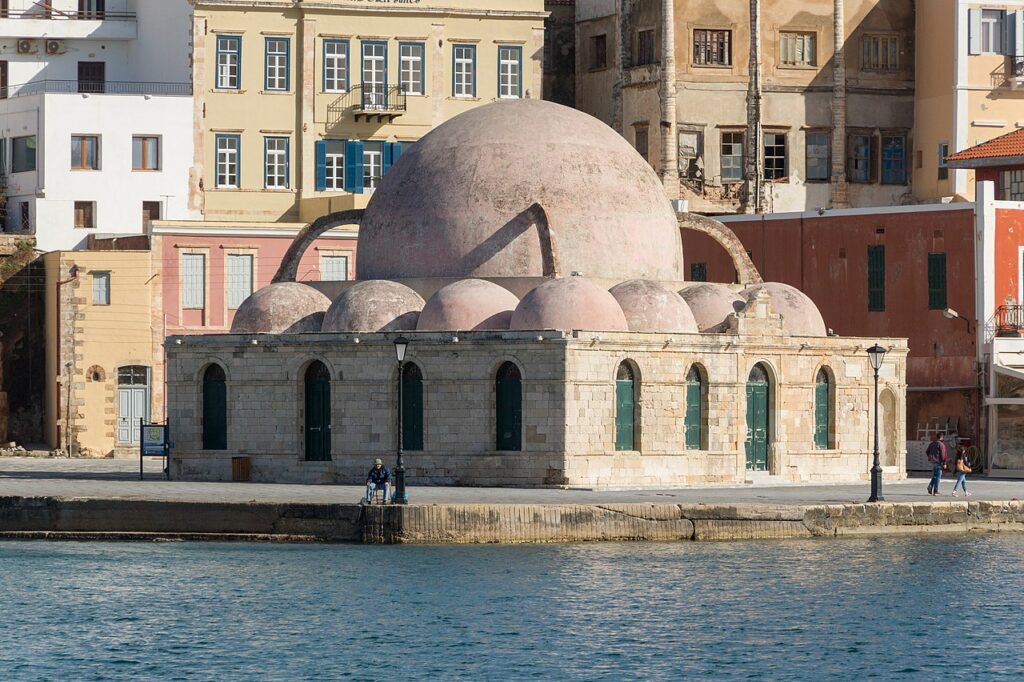
The Ottoman Empire had a powerful navy, which helped it control many islands in the Mediterranean Sea. The Ottomans fought several major conflicts against the Republic of Venice, from which they took many islands like Crete, Rhodes, and Cyprus. The Ottomans constructed several mosques throughout these islands, including the Küçük Hasan Pasha Mosque in Chania, Crete. The building contains many typical elements from Ottoman Architecture, such as its many domes.
29. Hurrem Sultan Bathhouse – Istanbul, Turkey
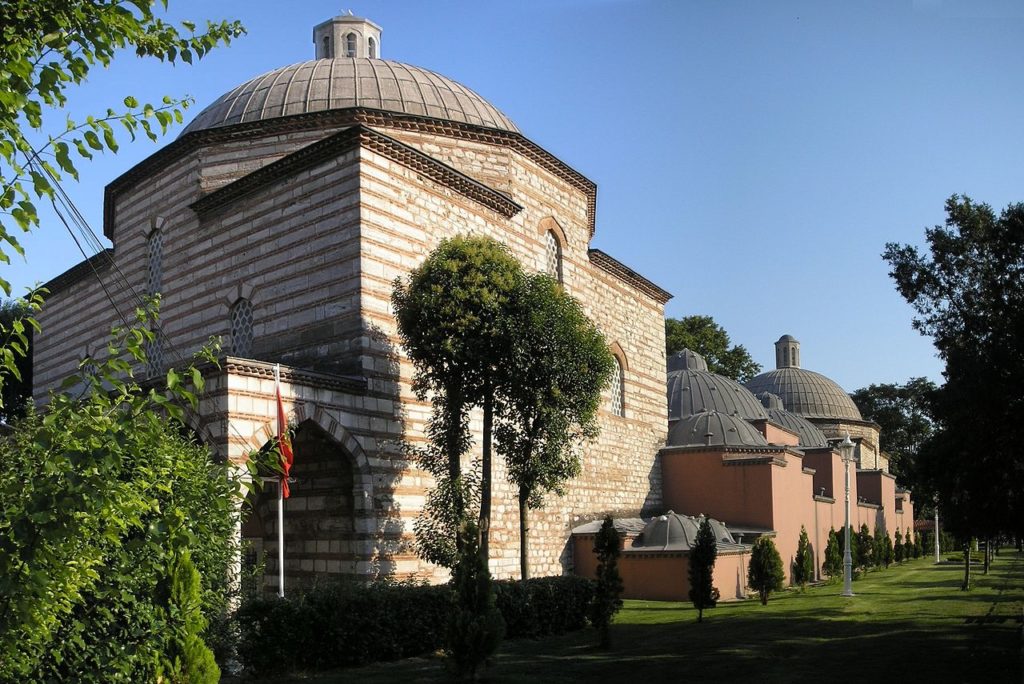
The Hurrem Sultan Bathhouse is a Hammam located in the center of Istanbul. It’s prominently positioned right next to the Hagia Sophia and Sultanahmet Square. The building was designed by the Ottoman architect Mimar Sinan, and it’s one of only a few baths he designed. It was completed during the reign of Suleiman the Magnificent, and it represents the power and splendor of the Ottoman Golden Age. The bathhouse is comprised of a series of chambers, each topped with its own dome. These chambers served different functions, for bathing in hot vs. cold water and for actual washing vs. just relaxing.
30. Mehmed Paša Sokolović Bridge – Višegrad, Bosnia and Herzegovina
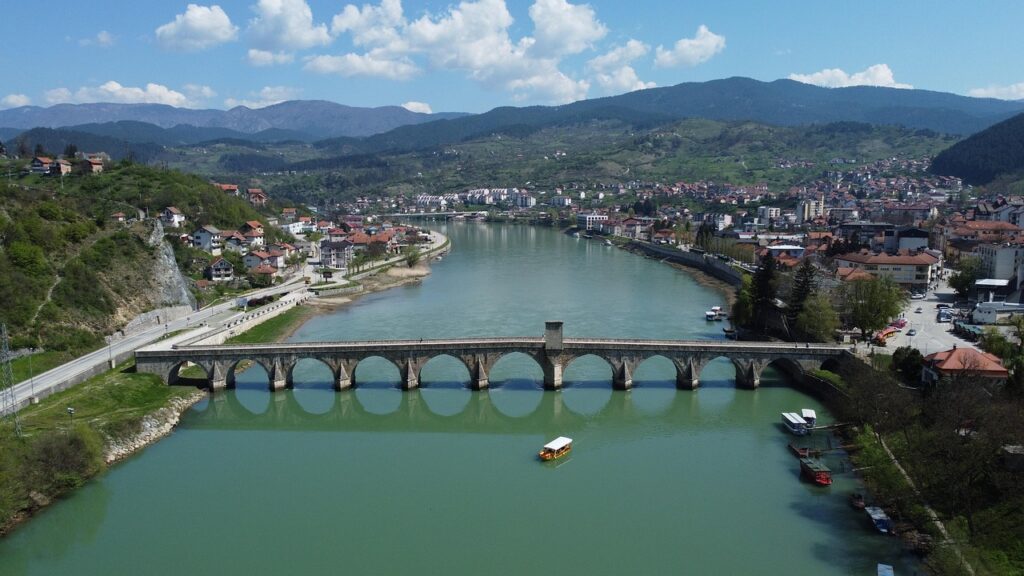
The Ottoman Empire created many roads and bridges throughout its vast territory. One great example of this is the Mehmed Paša Sokolović Bridge. It’s an important Ottoman structure within Bosnia & Herzegovina, and it’s listed as a UNESCO World Heritage Site. The bridge has 11 pointed archways, spanning a length of 587 feet (179 meters) over the Drina River. The bridge was constructed during the reign of Sultan Murad III in 1577.
Influences of Ottoman Architecture
Ottoman Architecture remained incredibly influential, both before and after the fall of the Ottoman Empire. During this time, many neighboring nations constructed Ottoman-style buildings. One of the best examples of this is the Muhammad Ali Mosque in Cairo, Egypt. The building was completed in 1857 and commissioned by Muhammad Ali Pasha of Egypt. Muhammad Ali was a former Ottoman regent who ended up seizing control of Egypt and ruling it independently. He both admired Ottoman Architecture and wanted to create something that rivaled the magnificent buildings of Istanbul.
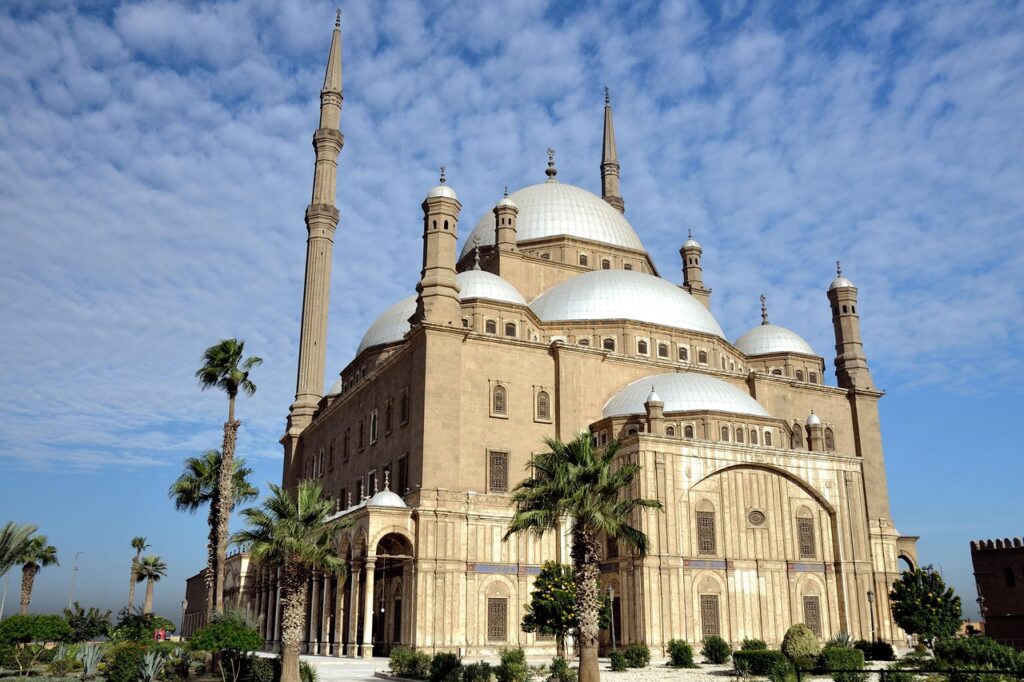
Ottoman Architecture also remains important in the modern age. Ottoman-inspired buildings can be found throughout much of the Middle East and the Caucasus. Ottoman Architecture is also incredibly important in modern Turkish Society. The image below shows the Grand Çamlıca Mosque. It’s a modern reinterpretation of a Classical Ottoman Mosque and was completed on the Asian side of Istanbul in 2019. The Grand Çamlıca Mosque is the largest mosque in Turkey, and its design incorporates domes, minarets, and many other Ottoman elements.
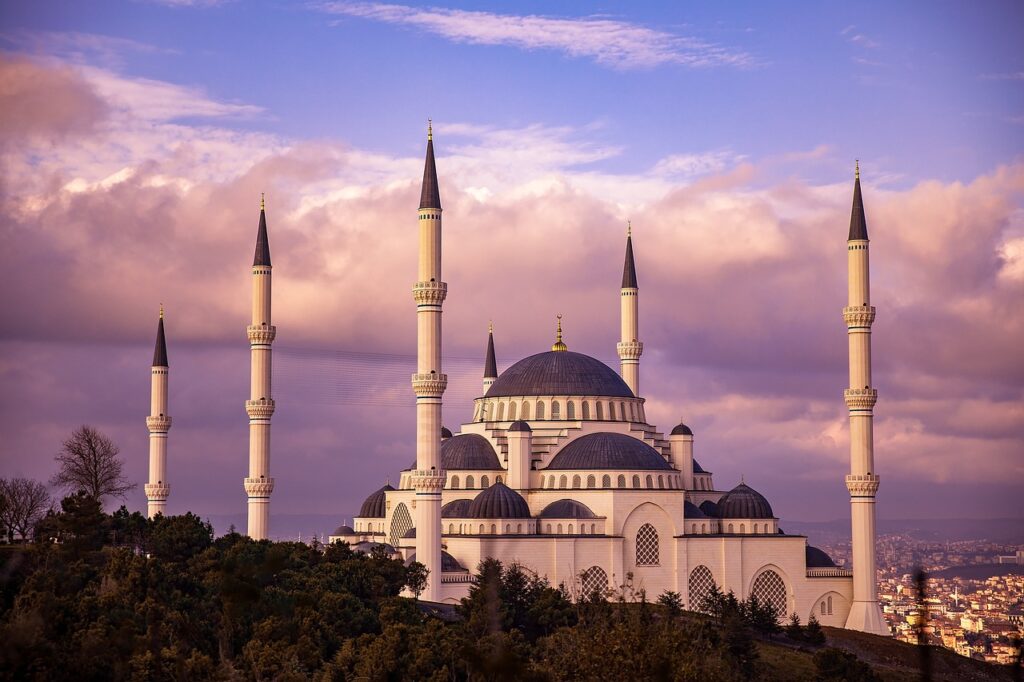
Legacy of Ottoman Architecture
The Ottoman Empire was one of the most powerful nations of the last five centuries. It reached its peak during the 16th-century reign of Suleiman the Magnificent, and was a formidable empire until its rapid decline in the 19th century. The Ottomans were master builders and created a unique building style that, like Istanbul itself, was equal parts east & west. Today, there are countless works of Ottoman Architecture throughout Turkey and the surrounding area, and these buildings are still highly regarded and influential in the modern age.

- About the Author
- Rob Carney, the founder and lead writer for Architecture of Cities has been studying the history of architecture for over 15 years.
- He is an avid traveler and photographer, and he is passionate about buildings and building history.
- Rob has a B.S. and a Master’s degree in Architecture and has worked as an architect and engineer in the Boston area for 10 years.
Like Architecture of Cities? Sign up for our mailing list to get updates on our latest articles and other information related to Architectural History.

Another view of the mosques of Istanbul

